American Essence
FOR EVERYONE WHO LOVES THIS COUNTRY
In Pursuit of Truth
Ignat Solzhenitsyn on honoring his father’s commitment to truth and the future of classical music America’s
Early Music
Immigrants inspired by opportunity and the promise of unfettered faith blessed our nation with song
FLYING HIGH
Art Thompson, the engineering brains behind many daredevil projects, has a flair for showmanship—but ultimately what drives him is the future: advancing tech innovation for America, and inspiring the next generation
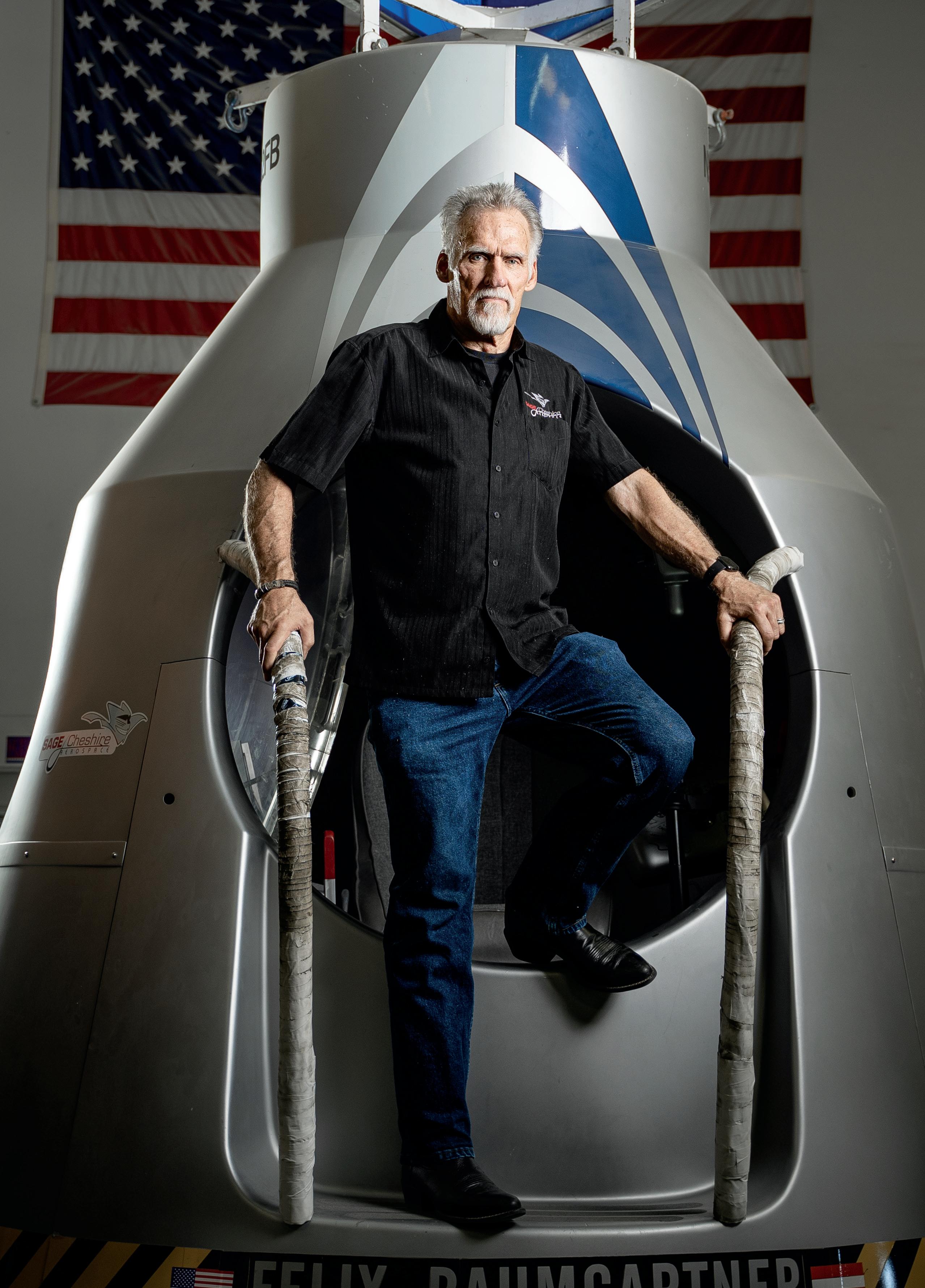
American Essence FEBRUARY 2023 VOLUME 3 | Issue 2
FEBRUARY 2023
LimitedPreview ofSelectedContent
We shall never be successful over the dangers that confront us; we shall never achieve true greatness, nor reach the lofty ideal which the founders and preservers of our mighty Federal Republic have set before us, unless we are Americans in heart and soul, in spirit and purpose, keenly alive to the responsibility implied in the very name of American, and proud beyond measure of the glorious privilege of bearing it.”
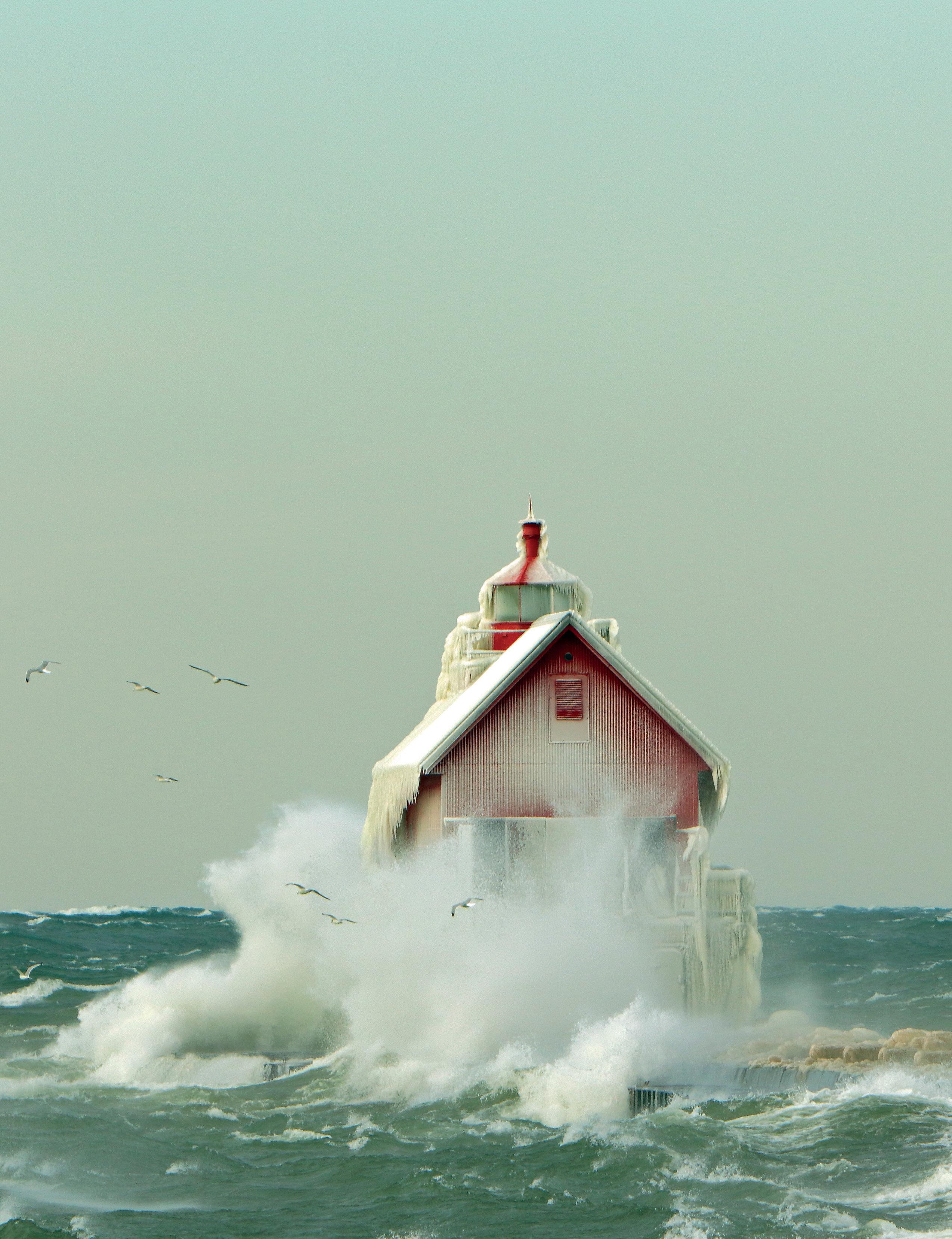 The tumultous waters of Lake Michigan during the winter.
—THEODORE ROOSEVELT
The tumultous waters of Lake Michigan during the winter.
—THEODORE ROOSEVELT

Contents
Features
6 | Protecting the American Mustang
An Alabama woman makes it her life mission to protect the wild horses who saved her life.
10 | A Commitment to Truth
Inspired by his Nobel Prize-winning father, Russian American Ignat Solzhenitsyn makes the creative arts his life’s work.
14 | Renaissance Man
From the Batmobile to a space capsule, Art Thompson’s projects fire up the imagination.
24 | Surviving a Dictatorship
Virginia Prodan stood up for religious freedom during Nicolae Ceausescu’s regime and eventually found refuge in America.
30 | Family Roots
When summer boredom grew just too much to bear for Gwen McCorquodale and her sisters, her mother hatched an unusual plan.
34 | Why I Love America
The moment Eve Lyn Forbes immigrated to America, she kissed the airport ground and has since been a proud citizen.
History
40 | The Indecipherable Language
The Comanche Code Talkers, whose native tongue was impossible for non-speakers to interpret, were essential to the Allied victory of World War II.
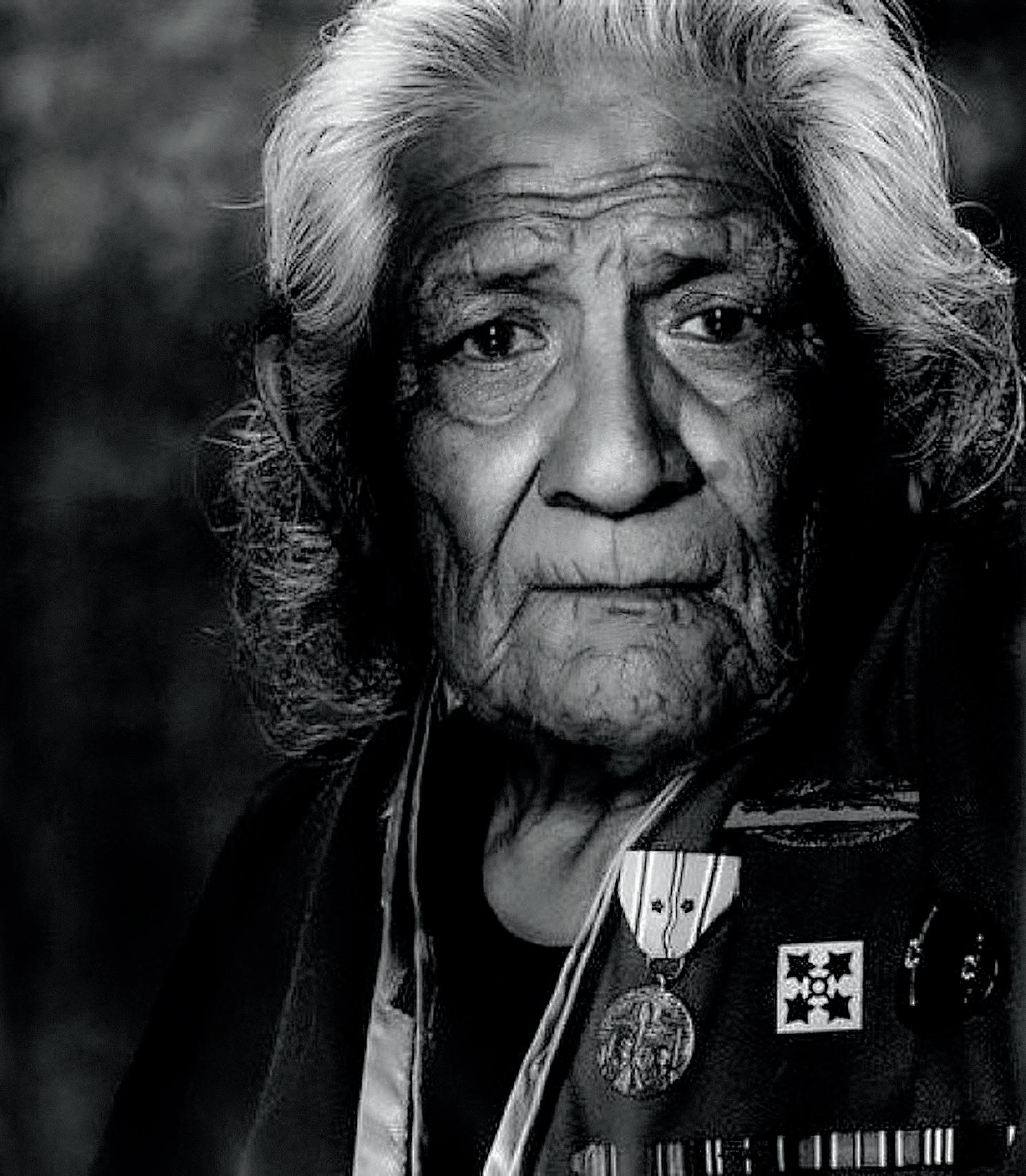
46 | Defending Liberties
To limit the tyranny of the majority, James Madison’s proposed bill set the foundation for the idea of separation of church and state.
50 | The Talking Machine
Influenced by his parents, Alexander Graham Bell set out to invent a machine that could transmit the spoken word.
52 | School Founder to Saint
The first American to be canonized a saint, Elizabeth Ann Seton founded schools that tested the country’s Bill of Rights.
56 | A Song in Their Hearts
Inspired by America, early immigrants created hymns and ballads celebrating life in their new homeland.
62 | Book Recommender
“The Great Air Race” recounts how the expedition of the 1919 transcontinental air race sparked the nation’s interest and paved the way for the foundation of modern American aviation.
4 AMERICAN ESSENCE
40
ON THE COVER Art Thompson with the Red Bull Stratos, which was instrumental in setting the world record for fastest unmanned freefall ever—reaching the speed of sound.
Lifestyle
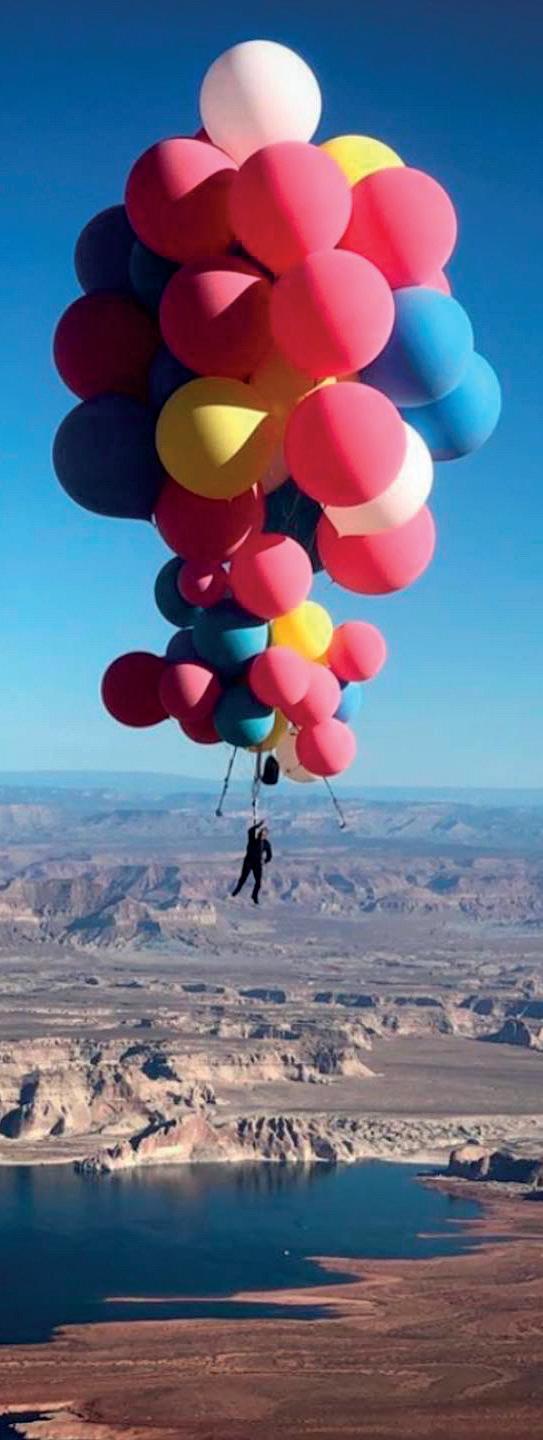
64 | Hawaiian Chocolate
The only state to commercially grow cacao is turning it into rare and distinctive bars.
68 | The Prairie Homestead City girl turned homesteader Jill Winger is a voice—and online mentor—for a new generation going back to its roots.

74 | A Recipe for Love
Professional chef couples share home-baker-friendly recipes—and sweet stories—for Valentine’s Day.
80 | Purple Mountains Majesty
Hudson River School painter Albert Bierstadt offered viewers who would never peril the westward journey a window to the Rocky Mountains.
86 | A Family Affair
For an Idaho family of 12, homesteading was a path to healthier food, stronger character, and most importantly, freedom.
90 | All Mapped Out
How the residents of one suburban Texas block have built a self-reliant system prepared for any emergency.
96 | Parting Thoughts
Dr. Michael Greger, author of “How Not to Die,” on his daily diet for a longer life.
ISSUE 3 | MARCH 2023 5
14 68
American Essence
PUBLISHER
Dana Cheng
EDITORIAL
Editor-In-Chief
Managing Editor
History & Literature Editor
Lifestyle & Food Editor

Arts Editor
Editors-At-Large
Production Manager
Production Assistant
Channaly Philipp
Annie Wu
Sharon Kilarski
Crystal Shi
Jennifer Schneider
Tynan Beatty
Maria Han
Astrid Wang
Jennifer Tseng
CREATIVE
Lead Designer Designers
Photo Editor
Cristina Greaney
Jasmina Zhang
Sunny Lo
Tatsiana Moon
CONTRIBUTORS
Karim Shamsi-Basha, Kenneth LaFave, Gwen McCorquodale, Eve Lyn Forbes, Pamela Beiler, J.D. Haines, Andrew Benson Brown, Rachel Pfeiffer, Jeff Minick, Raymond Beegle, Mark Lardas, Eric Lucas, Anita Sherman, Bob Kirchman, Michael Wing
American Essence (USPS 24810) is published monthly by Bright Magazine Group at 5 Penn Plz. Fl.8, New York, NY 10001. Periodicals postage is paid at New York, NY. Postmaster: Send address changes to American Essence, 5 Penn Plz. Fl.8, New York, NY 10001.
General Inquiries: AmericanEssence.net/help
Submissions: Editor@AmericanEssence.net
www.AmericanEssence.com

AMERICAN ESSENCE
EVERYONE
LOVES THIS COUNTRY FEBRUARY 2023 | VOLUME 3 | ISSUE 2
FOR
WHO
Editor’s Note
Dear Readers,
In this issue, we get a bird’s-eye view—from the stratosphere—of an example of American creativity and innovation. Art Thompson, whose credits include designing a space capsule for the Red Bull Stratos project—in which Felix Baumgartner set a record for becoming the first person to break the sound barrier in free fall—gives us insider details into the project (page 14). The feat inspired millions around the globe; and just as it relied on those scientists and test pilots who came before, it also offered valuable research for the future of manned endeavors at the edge of space.
In this issue’s “Why I Love America” essay (page 34), a touching first-person perspective also takes us back to a moment of first landing in America (this time, at an airport, and via airplane). We also pay a visit to pianist Ignat Solzhenitsyn (page 10), who reflects on the future of classical music and the legacy of his father, Nobel Prizewinning author Aleksandr Solzhenitsyn.

Don’t miss the courageous tale of Virginia Prodan (page 24), who found herself on Romanian dictator Nicolae Ceausescu’s hit list because she stood up for religious freedom—and ended up face-to-face with the man sent to kill her. It reminds us, indeed, that America continues to be the home of the brave.
Editor-In-Chief Channaly Philipp Editor@AmericanEssence.net
ISSUE 3 | MARCH 2023 7 | FEBRUARY 2023 5
Ignat Solzhenitsyn: A Son Honors His Father’s Legacy
Musician Ignat Solzhenitsyn’s latest project: translating all the works of his Nobel-Prize-winning father
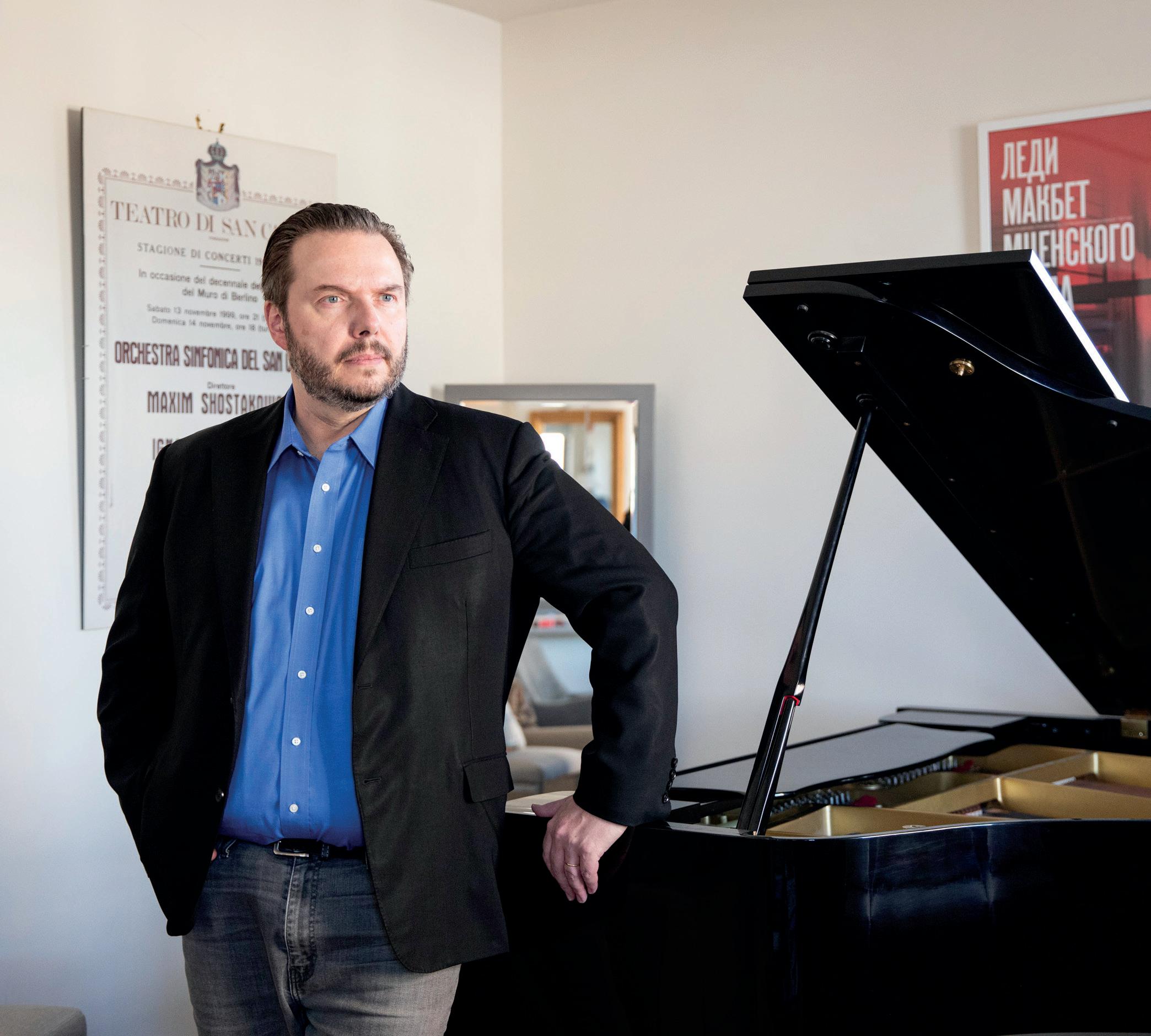
8 AMERICAN ESSENCE 10
Pianist and conductor Ignat Solzhenitsyn hopes to translate all of his father’s written work from Russian to English.
WRITTEN BY Kenneth LaFave PHOTOGRAPHED BY Adhiraj Chakrabarti
Ignat Solzhenitsyn is a man divided. And that’s a good thing.


“I felt I was already split in two halves as both pianist and conductor. But now there is this other half,” said the 50-year-old musician.
The “third half” of Solzhenitsyn’s life is his dedication to finishing the English translation of his father’s complete works. His father, Aleksandr Solzhenitsyn (1918–2008), was one of the 20th century’s most important writers: Nobel Prize-winning author of the three massive volumes of the “Gulag Archipelago,” his book about the gulag forced labor system— which included intimate reflections on the eight years he spent in a gulag prison—as well as such novels as “One Day in the Life of Ivan Denisovich,” “Cancer Ward,” and “In the First Circle.” The elder Solzhenitsyn’s crime: expressing in a private letter some doubts about Stalin’s decisions at the end of World War II. Only Stalin’s death in 1953 kept him from spending the rest of his life in the Soviet prison system, which Solzhenitsyn christened “the gulag archipelago.” In 1970, the Nobel committee awarded him the literature prize, commending his work “for the ethical force with which he has pursued the indispensable traditions of Russian literature.”
Young Dreams
Solzhenitsyn’s accomplishments loom so large that it must have been daunting for young Ignat to pursue his own, separate artistic dreams. But he did, and with his family’s full support. He recalls having walked into his father’s study and hearing Beethoven on the record player. He was mesmerized, and his father, rather than shooing Ignat out the door, listened with him as the music unfolded. The family had recently moved into a Vermont farmhouse that came with a baby grand piano. Lessons ensued.
“That was my first conscious discovery of music, but I’m told that when I was not even able to walk yet, I would stand by the record turntable, holding on to it and listening to the LPs playing. When the music stopped, I would throw a fit until it started again,” Ignat
Solzhenitsyn said.
Young Solzhenitsyn’s passion and years of practice on that baby grand led to earning dual degrees in piano and conducting at Philadelphia’s Curtis Institute, followed by a concert career aided by the prestigious Avery Fisher Career Grant. The list of orchestras with which Solzhenitsyn has appeared either as pianist or conductor is long and includes those of Boston, Chicago, Philadelphia, Los Angeles, Toronto, London, Paris, Israel, and Sydney, among many others.
The pandemic put a hole in that list’s chronology for 20 months, but 2022 has seen Solzhenitsyn gradually resume his performing schedule with performances in Philadelphia, at the Marlboro Festival; London’s Wigmore Hall; and elsewhere. “Classical music has been very quick to cancel and very careful about rescheduling because until very recently, there has been so much uncertainty, particularly about state regulations,” Solzhenitsyn said.
He is in the midst of planning a spring 2023 schedule that includes piano recitals and an
ISSUE 3 | MARCH 2023 9 | FEBRUARY 2023 11
Musicians | Features
ABOVE A concert poster for “Lady Macbeth of Mtsensk,” an opera by early 20th-century composer Dmitri Shostakovich, which Ignat Solzhenitsyn conducted in Moscow.
appearance conducting Moscow’s National Philharmonic Orchestra. Though raised in the United States and England, Ignat Solzhenitsyn was born in Moscow, and he retains connections to that city both professionally as a musician and personally through his two brothers and mother who live there. The brothers moved back to Russia from America, as did their father toward the end of his life, when it was certain that the Soviet Union was done for. Ignat, because he was committed to studying music in the West and had a full slate of concerts even before graduating from the Curtis Institute, remained behind.
That has not always been easy, especially in recent months. Asked if the current Russia–Ukraine war has made his life in the Ukraine-supporting West more difficult than otherwise, Solzhenitsyn paused, and said quietly: “Yes, it has. That’s my best answer. It is a difficult time.”
Translation as Discovery
The last two years were difficult in a different sense, as the pandemic has kept Solzhenitsyn isolated in New York and at the old family home in Vermont. During that hiatus, he turned to related matters: “I focused on

other projects, first of all teaching, both at the Curtis Institute”—where he has been on faculty since 2004—“and privately. But I also took time to reevaluate some responsibilities with respect to my father’s work.”
Aleksandr Solzhenitsyn’s complete writings in Russian consist of 30 volumes averaging 500 pages each. Despite the Nobel Prize and the West’s recognition of Solzhenitsyn’s genius, many volumes have yet to see English translation. Addressing that deficiency became Ignat’s ambition during his downtime.
“Much Solzhenitsyn has appeared in English but there is much still awaiting translation, and that is something I am trying to rectify,” the younger Solzhenitsyn said. “The most important work yet to be fully translated into English is arguably his most important work, ‘The Red Wheel.’”
“The Red Wheel” is a history of the Russian Revolution in which the events and characters are historical, but the dialogue in many cases is imagined, for the obvious reason that in most instances no one recorded conversations between, for example, Lenin and Trotsky. The result is factually based but also novel-like in its interchanges between personae. “It is a work like no other. He had to invent a genre
10 AMERICAN ESSENCE 12
Features | Musicians
LEFT Aleksandr Solzhenitsyn with his family at the Zurich airport, in March 1974. Ignat is in his left arm.
ABOVE RIGHT Ignat Solzhenitsyn at his first concert, in Dec. 1983.
This
page is not in the preview.
vvv
just to write it, to bring history alive.”
Comprised of four parts in the Russian original, three volumes have now been brought out in English: “August 1914,” “November 1916,” and “March 1917.” Ignat Solzhenitsyn is now focusing on bringing out the final volume, “April 1917,” “in which Vladimir Lenin, as we now know, arrived in Russia with the secret assistance of the German government to meet with Trotsky and plot their way to power.”
not included preview.
Many more volumes of prose, poetry, and even stage plays remain to be translated. Completing that task has been Ignat’s new focus, because, as the son puts it, “It’s important today that everything flows through English.”
His father lived a long life, but even so, how did he manage an output so vast? “He did not understand the concept of writer’s block. He felt it was a luxury experienced by writers in well-to-do circumstances who could choose to write but also choose not to write, while in his case, he was from a youngest age compelled by fate and his desire and his gift to be a writer. This was greatly fortified by the sense of duty to use his remaining years to document and record and expose the truth about Russia, truth that was not only neglected but in many cases covered up, concealed, distorted, and lied about by the Bolsheviks and their successors.”

Reflections on Classical Music
Ignat Solzhenitsyn's devotion to his father's work echoes his own commitment to an art form that conveys the values of an era gone by. Gazing out onto a contemporary cultural landscape that often engages in anti-Western
animus, where culture itself is considered suspect if its origins are European, what future does he see for the classical music he loves?
“We are seemingly in the process of throwing overboard the heritage of Western culture. I would think that, when contrasted with so many unjust and vile things we’ve done as a species, culture would be seen to stand as representing the best we have done. This idea that we should toss it because it doesn’t fit the current narrative is profoundly short-sighted and may yet lead to catastrophic, irreversible results. I hope and believe, however, that will not be the case.” What forms the foundation of his optimism? “For as long as we are human, we will need music. We do not live by bread alone,” Solzhenitsyn said, alluding to the Biblical passage, Matthew 4:4: “Man shall not live on bread alone, but on every word that comes from the mouth of God.”
“That passage has always struck me. It’s so counter-intuitive in a way. What could we possibly need besides the material? But most of us, at some point, search for spiritual nourishment. Classical music will always be needed.” •
ISSUE 3 | MARCH 2023 11 | FEBRUARY 2023 13
Musicians | Features
“For as long as we are human, we will need music. We do not live by bread alone.”
—IGNAT SOLZHENITSYN, PIANIST & CONDUCTOR
Engineering the Impossible Into Reality
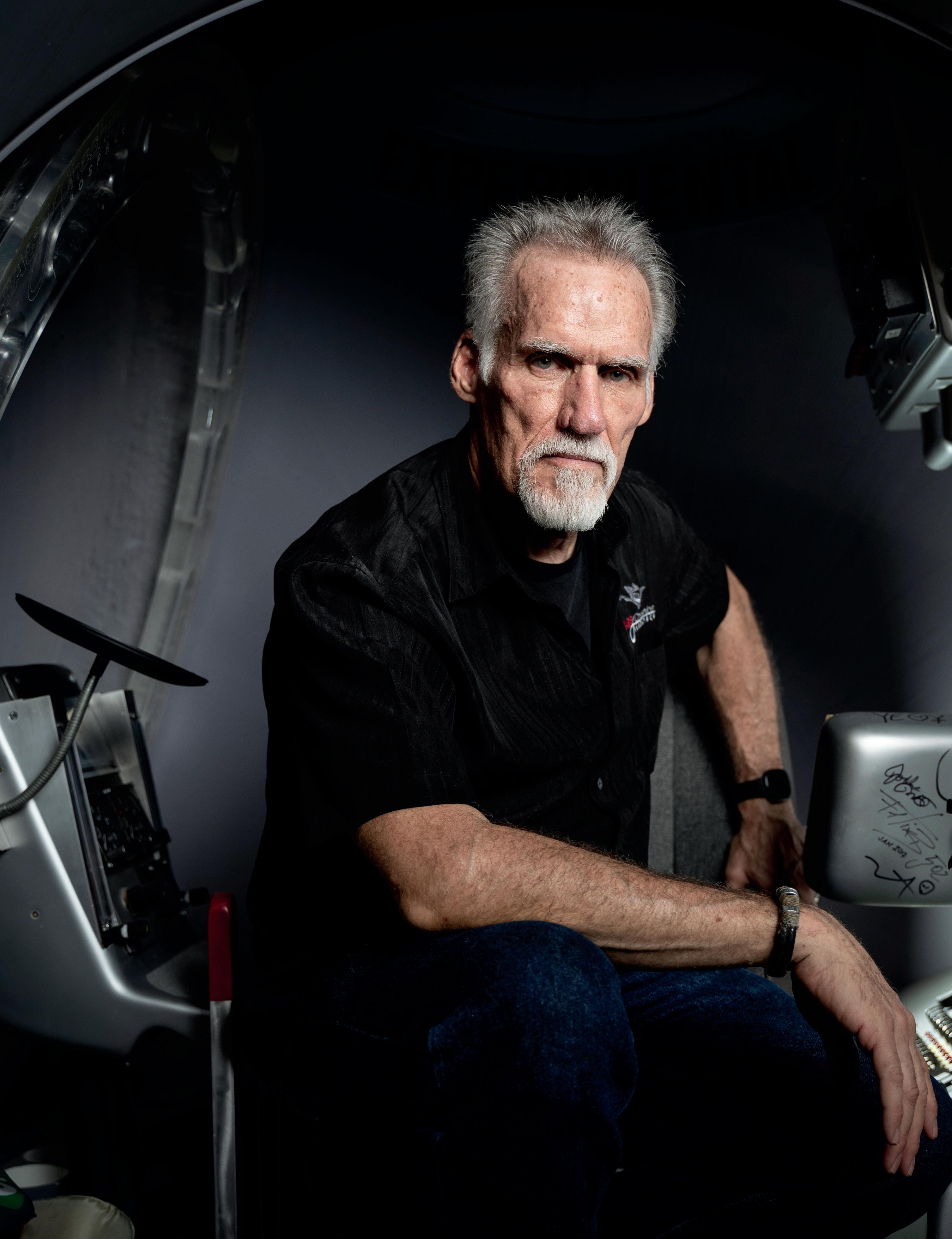
If Art Thompson’s creations sound like they should be in the movies, that’s because some of them are— the Batmobile, for example— but one thing is for sure: his viral projects get people inspired, and that’s exactly what he wants
Babies’ chew toys, Batmobiles, rocket engines—Art Thompson makes them all.
Thompson is a modern-day da Vinci, the rare sort of individual these days who is equally comfortable in the worlds of arts and technology, and more often than not bringing the two together. One of his earliest jobs involved running a sign shop—the owner handed it over to him a day after he’d started. He was still a teenager. Later, his art background came in handy at the aerospace company Northrop, where he made architectural models and was pulled into working on the B2 stealth bomber for over 10 years.
Thompson’s own companies, Sage Cheshire Aerospace and A2ZFX, share a workshop space in Lancaster, California, devoted to design, engineering, prototyping, fabrication, and testing.
Sage Cheshire regularly makes parts for government agencies or aerospace companies—from aircraft fairings and components to antennae for the U.S. Navy—much faster and cheaper than they could do themselves.
“We’re a super small organization and highly efficient,” Thompson said. “So while a company like Northrop or Lockheed or Boeing spends a lot of time in bureaucracy trying to figure out what they want to do, we’re already finished with
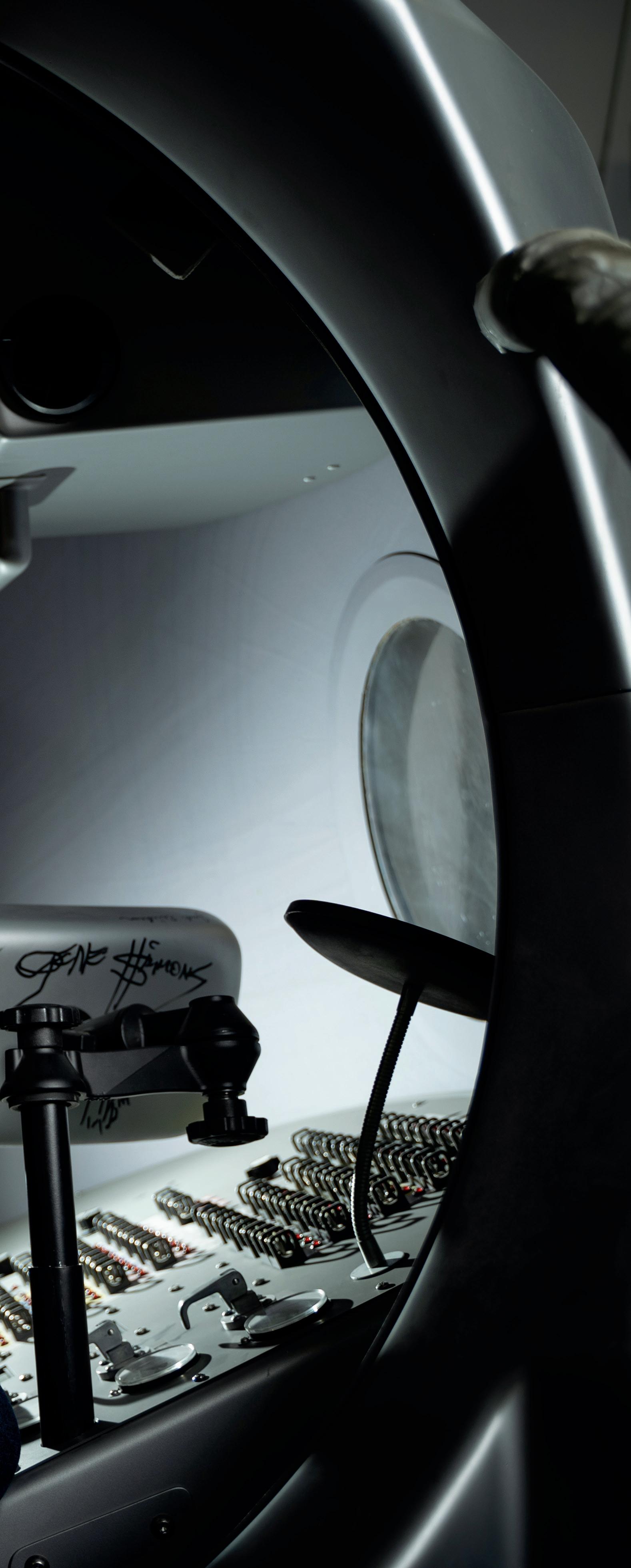
13 15
WRITTEN BY Channaly Philipp
PHOTOGRAPHED BY Samira Bouaou
Entrepreneurs | Features
LEFT Art Thompson is the founder of Sage Cheshire Aerospace, as well as A2ZFX, based in Lancaster, Calif. Here he is seated inside the Red Bull Stratos space capsule, which he designed, produced, and tested. Its outwardly simple design belies the sophisticated systems in place.
the project. And so they realize that and use that to their advantage by contracting work.”
The company can take on larger projects, too, such as scanning and reverse-engineering an airplane that an aerospace company bought from a foreign provider, who wouldn’t give them the plans. Thompson also has his own projects. Working with a space plane, he started to think about how he could develop the technology for a better defense system. Instead of using a hypersonic weapon against a hypersonic missile—the equivalent of launching a bullet to hit a bullet—he envisions launching a space plane at 250,000 or 350,000 feet in altitude, firing pulses of laser, which would have a better chance of hitting the target, since the speed of light is faster than the speed of a hypersonic missile. With its small footprint, the plane could also be
used for reconnaissance and be transported easily anywhere around the world and launched from a regular runway, unlike a rocket.
While Sage Cheshire handles some serious business, A2ZFX focuses on product development and special effects—from the mundane to the spectacular. For example, the blister-like yellow bumps on sidewalks? Thompson’s team made the original version of these “truncated domes,” as they’re formally known. “And I cursed myself every time going over them with a shopping cart—along with millions of other people,” he said good-naturedly. A more dramatic, and flammable, example involved recreating a flying object zooming around in the air, to mimic the Human Torch for the promotion of a “Fantastic Four” movie.
Some of his projects not only have an undeniable flair for fun but also
are marketing gold—like the Hum Rider, engineered to show off a marvelous solution to traffic jams. Envision a Jeep Grand Cherokee, with a wheelbase that widens and a body that elevates several feet above traffic, leaving stunned commuters below in the dust. Conceived to promote Verizon’s Hum dongle and smart app, the video made ripples through the internet, receiving a billion views.
The energy drink company Red Bull, with its marketing strategy embracing extreme sports and jaw-dropping stunts, was another client that was a natural fit.
When Red Bull was in its early stages of entering the U.S. market, it hired Thompson to make its eye-catching “can cars”—Mini Coopers outfitted with giant Red Bull cans on top, deployed with reps all over the country to offer samples of its product. Thompson


14 AMERICAN ESSENCE 16 Features | Entrepreneurs
This page is not in the preview.
not included preview.
built over 1,000 of these vehicles, although he jokes he had to build 3,000 cans to replace the ones that got destroyed. He said, “We would always tell [the drivers], ‘Don’t drive into the parking structure,’” which they invariably would.
Mission to the Edge of Space
In 2005, Thompson got a call from Felix Baumgartner, an Austrian friend whom he’d met at a Red Bull go-kart race in Austria. A daredevil and base jumper, Baumgartner was best known for his unpowered winged flight across the English Channel from 30,000-foot altitude in 2003 and jumping off the world’s tallest buildings, such as the Petronas Twin Towers in Kuala Lumpur in Malaysia.
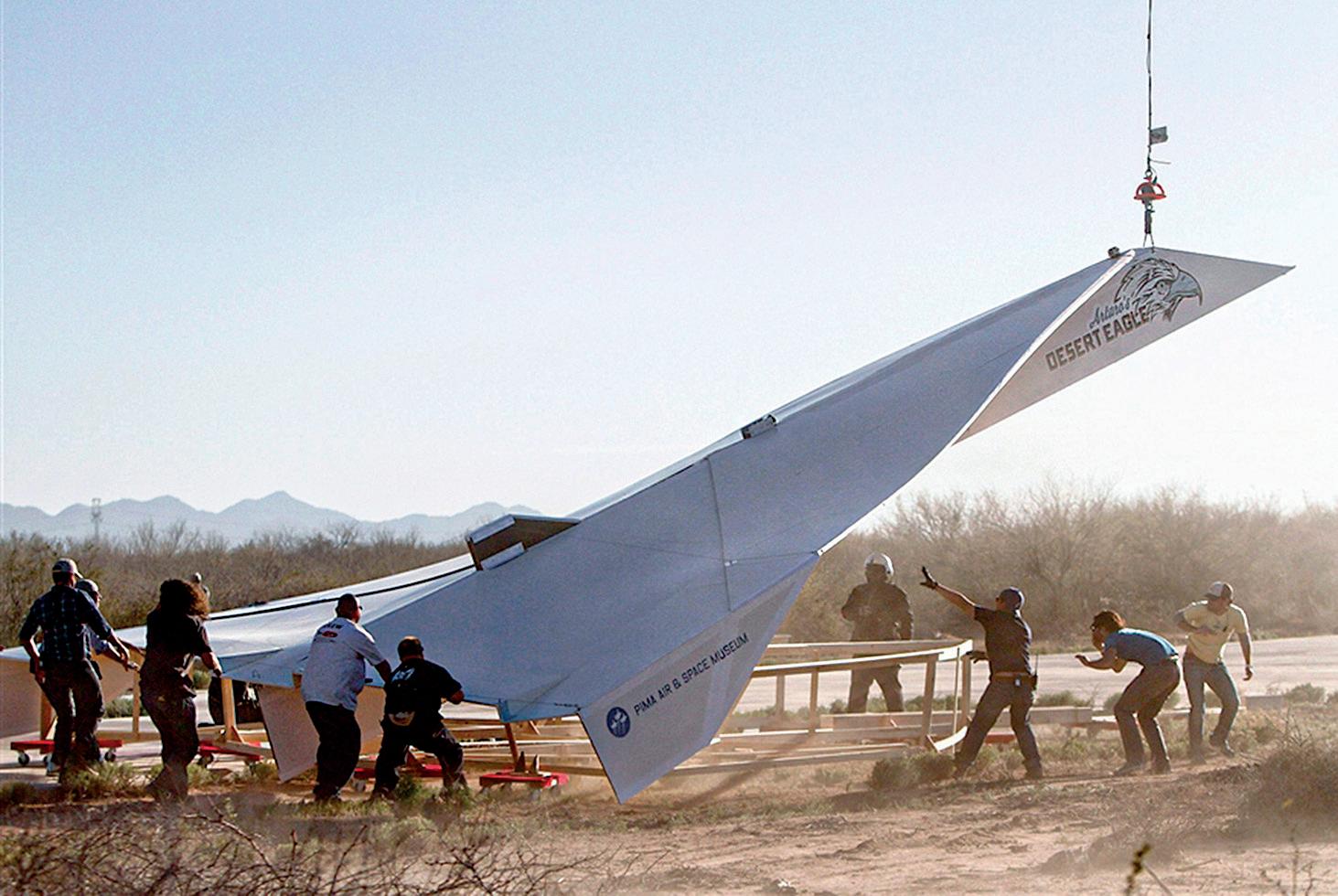
He asked Thompson if he knew
Joe Kittinger, who had jumped from a balloon at 102,800 feet in 1960 and reached a speed of 614 miles per hour, sustaining freefall for 4 minutes, 36 seconds. It was a record that stood unbroken.
Then he asked Thompson: If you were to break Kittinger’s record, how would you do it? Baumgartner wanted to know if it was possible to jump from space or the stratosphere and fall at supersonic speed.
“You know,” Thompson recalls telling him, “It’s 3:30 in the morning in Austria. Why don't you go back to sleep, I’ll call you tomorrow and I’ll tell you some ideas.”
He ended up writing an 87-page proposal including how a pressurized capsule could be built, with redundant life support, spacesuits, and stratospheric balloons.
ISSUE 3 | MARCH 2023 15 17 | FEBRUARY 2023
vvv
“Since I was a little tiny kid, I’ve always wanted to build the world’s largest paper airplane.”
—ART THOMPSON
FAR LEFT Art Thompson started making one “can car” for Red Bull and eventually produced over 1,000 of them.
LEFT This Jeep Grand Cherokee was transformed into a commuter’s dream for a viral Verizon ad.
ABOVE In 2012, Thompson built a giant, 45-foot-long, 800-pound paper airplane that took to the Arizona skies for six seconds. It was part of the Pima Air & Space Museum’s Great Paper Airplane Fly-Off competition, to spark interest in aviation and engineering. The plane was based on a model by 12-year-old Arturo Valderamo.
vvv
Thompson flew to Austria to present the idea to Dietrich Mateschitz, the late owner of Red Bull, who engaged Thompson as the technical project director for the Stratos project. But Thompson didn’t want it to just be a marketing stunt. It needed to be real science with a purpose.


Though Kittinger had made his jump over 50 years ago, the protocols around high-altitude freefall were few. Thompson saw a realworld opportunity. For him, it was about developing and researching
how a U.S. Air Force or NASA pilot could safely exit a high-altitude craft, as well as medical systems to treat astronauts and pilots in case of ejection and rapid decompression.
“The beauty of it is, the government didn’t pay one dime for it,” he said. “I got an Austrian energy drink company to pay for all of the development. We then shared this knowledge with the government for free.”
“That’s the future of business, because the power of social media
is that tool that can be used to fund future research,” he said.
Say you wanted to go to Mars, Thompson offered by way of example. “The government doesn’t want to pay for going to Mars. … But if you could go to a tennis shoe company and say your tennis shoes are going to be the first ones going to Mars, and it’s going to cost this much,” these companies, with their huge marketing budgets, could step in and fund research programs that the government isn’t willing to fund.
Art Thompson ON WHAT MATTERS IN LIFE:
“In life people get misdirected on what's important, they think it's money and fame. Those are the last things that are important. The reality is, when you stop and think about all the good times, the things that meant
something to you, it's usually time with your family, with your loved ones, experiencing some event in some location. That's the importance in life—the essence of living, not owning, right? To me the idea of money or any of that stuff, that's all gravy, I never had an interest in being famous or being an influencer.”
16 AMERICAN ESSENCE
“One of my best Christmas presents when I was a kid was when my parents got me a stack of lumber with a saw and hammer and nails. I was 5 or 6 years old in the backyard and started building pirate ships and forts.”
—ART THOMPSON
Features | Entrepreneurs
This page is not in the preview.
not included preview.
Doing the Impossible
During the Stratos project, another project turned up that Thompson couldn’t refuse. The Pima Air and Space Museum asked him: Would he build the world’s largest paper airplane?
When he was young, he would use newspaper and coat hangers and build giant paper airplanes. The largest he got was about 5 feet. This time, the dimensions were only limited by the need to fit the plane onto a semi truck. Built entirely out of paper, it was 45.5 feet long, with a 24-foot wingspan, and required 20 gallons of wood glue to put it together.
As 300 schoolchildren watched, a Sikorsky S-58T helicopter took the plane up to 1,400 feet in the desert, and it was cut loose. It hit 98 miles per hour and flew just short of a mile. For Thompson, the main goal was achieved: to promote STEM education, and “help kids think outside of the box—that anything’s possible.”
“If I could have $1 for every person who told me the Red Bull Stratos was impossible, I’d be a millionaire,” Thompson said. There were physicists screaming at the end, ‘Don’t do it, his arms and legs will tear off.’”

Kittinger calmly responded, “Thank you for your concern, you may want to recheck your calculations.”
There was certainly a lot at stake, and the project team of fewer than 100 people was working hard to solve problems as they arose. Thompson said, “I was told 'no' every time I turned around and just found a way around the issue to make it a 'yes.' That is the lesson for the next generation. Never take 'no' as a final outcome."
Then there was the unpredictable human factor.
After years of testing and development and only weeks before the first manned flight, Baumgartner got cold feet—he was at the airport
in Los Angeles and called up Thompson, who rushed to go see him. Baumgartner, as it turned out, had developed severe claustrophobia inside his pressurized space suit. Human factors specialists Andy Walshe and psychologist Michael Gervais were brought in to help Baumgartner, pushing him into various uncomfortable situations and reminding him that he was a superhero and his pressurized suit was specifically designed for him.
Early on, it was decided that Kittinger, the one mission team adviser who understood firsthand what Baumgartner would experience, would communicate with him throughout his journey and talk him through the 47-point checklist before exiting the capsule.
The Space Capsule
Like Kittinger’s gondola traveling into space, the Stratos capsule was tethered to a helium balloon—but 10 times larger. At the size of 30
ISSUE 3 | MARCH 2023 17 19
| FEBRUARY 2023
LEFT Thompson’s parents were science teachers who imparted to him a love of science. His mother, Alice, is pictured here with George, a pet mountain lion, in 1956.
RIGHT Thompson (R) served as the technical project director for Red Bull Stratos. Joe Kittinger (C) was the primary point of radio contact with jumper Felix Baumgartner during the ascent.
On Oct. 14, 2012,
made a freefall jump from space. Thirty-four seconds after jumping, he reached a top speed of 844 miles per hour and achieved his goal of being the first person to break the sound barrier without an aircraft. From a height of 127,852 feet in altitude, it took him nine minutes to get back to Earth, half of that time being in freefall.
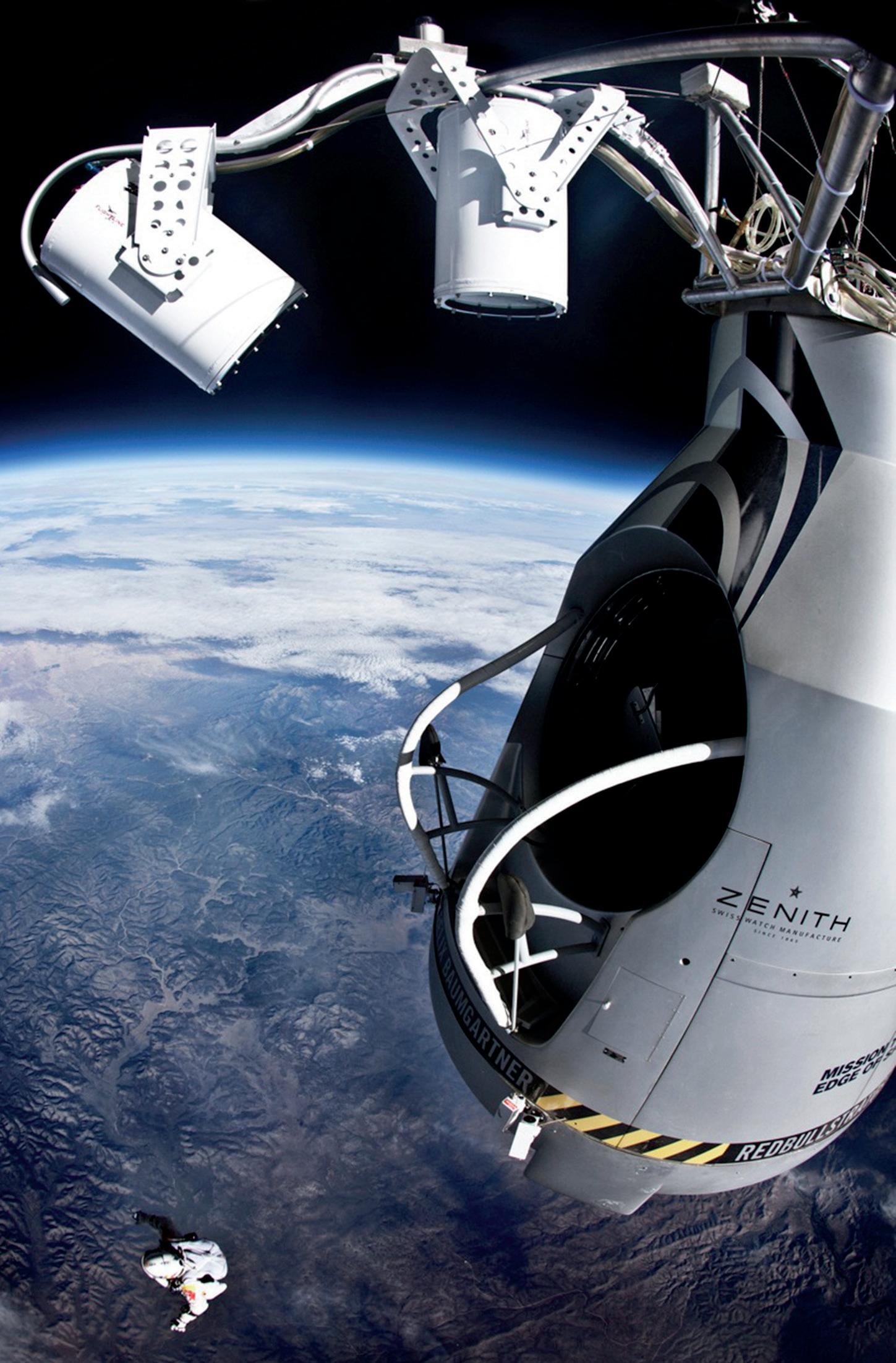
AMERICAN ESSENCE
Felix Baumgartner
million cubic feet, it was the largest manned balloon ever flown. The ascent to an altitude of 127,852 feet took about two and a half hours.
Just as he prepared to jump off the ledge of the capsule, Baumgartner said, “I’m coming home now.”
“I know the whole world is watching and I wish the whole world could see what I see. Sometimes you have to go really high up to understand how small you really are.”
Thirty-four seconds after jumping, he hit Mach 1—just under 700 miles per hour. Fifty seconds after jumping, he reached March 1.25, a record speed of 843.6 miles per hour for a freefall. For 30 seconds, Baumgartner was supersonic.
He also set two other world records: the highest balloon flight (superseded by Alan Eustace in 2014) and the highest unassisted freefall. This Red Bull Stratos record is still a standing record, as Eustace’s jump was assisted with the use of a drogue parachute.
It was just 65 years before, to the day, that Chuck Yeager broke the sound barrier piloting the Bell X-1 Glamorous Glennis.
Back on Earth, about 9.5 million concurrent viewers were transfixed watching the feat, as 3.1 million tweets pinged across the globe.
In all, it would be viewed by 3 billion people.
It was an unmitigated success for Red Bull, a marketing coup— delivering a big uptick in sales, by 7 percent to $1.6 billion in the United States, and by 13 percent to $5.2 billion globally.
Igniting people’s imagination was certainly one part of the formula, Thompson said. But he also brought to the table a more intangible ability: an ability to connect with
and understand people from different backgrounds—scientific, medical, military, aerospace, and yes, even daredevil mindsets.
The Flight Test Museum and the Future Stratos also made Thompson proud, partly because many kids told him it inspired them to get into engineering. As chair of the Flight Test Museum Foundation, he sees a unique opportunity.
California’s Antelope Valley, also known as Aerospace Valley, is home to many aviation firsts due to the presence of Edwards Air Force Base, the United States Air Force (USAF) Plant 42, and NASA’s Neil A. Armstrong Flight Research Center, as well as companies such as Northrop Grumman, Lockheed Martin, Boeing, Virgin Galactic, and Scaled Composites.
“Some of the most brilliant minds in the world are located [here],” Thompson noted.
He is now overseeing the move of the museum, currently on-base, to a new home—75,000 square feet of space just outside of the base. It’ll house the museum’s rare aircraft, but it will also be a STEM education center, as well as “neutral ground” for industry players, government, and schools to come together to discuss the future and inspire the next generation to want to be part of something greater.
What concerns him is the phenomenon of students being “plugged into the Internet permanently” and being “spoon-fed” set answers like “a stone wheel is the best thing on a car.”
People want the answer quickly, Thompson said, but they don’t always know why they’re getting it. “We lose some of the creative
Joe Kittinger (1928–2022)
On Aug. 16, 1960, Joe Kittinger rose up into the sky in an open gondola, hoisted up by a huge helium balloon, and into space. At 102,800 feet, he said a fervent prayer, “Lord, take care of me now,” and jumped to earth, a distance of over 19 miles. He reached a speed of 614 miles per hour, and opened his parachute at 14,000 feet; a drogue chute that gave enough stability to free-fall for 4 minutes and 36 seconds without going into a fatal spin. The Air Force pilot proved that it was possible to survive a high-altitude ejection, and contributed greatly to the safety of aviators and astronauts around the world.

ISSUE 3 | MARCH 2023 19 21 | FEBRUARY 2023
 A rendering of the planned building for the Flight Test Museum outside the gates of Edwards Air Force Base in California’s Antelope Valley. Designed by architecture firm Gensler, it resembles the shape of the Nighthawk, a stealth plane built in the 1980s. The museum will hold more than 80 historic aircraft; completion is due in 2024.
A rendering of the planned building for the Flight Test Museum outside the gates of Edwards Air Force Base in California’s Antelope Valley. Designed by architecture firm Gensler, it resembles the shape of the Nighthawk, a stealth plane built in the 1980s. The museum will hold more than 80 historic aircraft; completion is due in 2024.
aspects of invention and inspiration— because they settle for that answer.”
Thompson’s parents, both science teachers, made it a point to expose him to as many interesting things as possible. “One of my best Christmas presents when I was a kid was when my parents got me a stack of lumber with a saw and hammer and nails. I was 5 or 6 years old in the backyard and started building pirate ships and forts.”
His inquisitive nature even became somewhat of a liability for his family. “One of the fears was, if they gave me something that I was going to take apart, and if I understood it really well, often, I didn’t bother putting it back together because—why?—I already knew how it worked.”
When he was 13, he bought his first car, an old Karmann Ghia, for $500. He rebuilt the engine and redid the wiring harness—and drove it around without a license.
“Physics is so fascinating, because you see it in everything. And I remember as a kid, when math became a physical shape, all of a sudden, my mind exploded— because math formulas, you know, create not only two-dimensional shapes, but three-dimensional shapes.”
“If you can expose [children] to all the fascinating things in the world, at a really early age, that develops your synapses. All of that activity is making all those neural connections and mapping that make you want to do more and be more.”
It’s why he’s so passionate about the Flight Test Museum. “This becomes a world now that exposes people to what’s possible,” he said. “This is engineering in motion. It’s physics in motion.” •

21 23
Entrepreneurs | Features
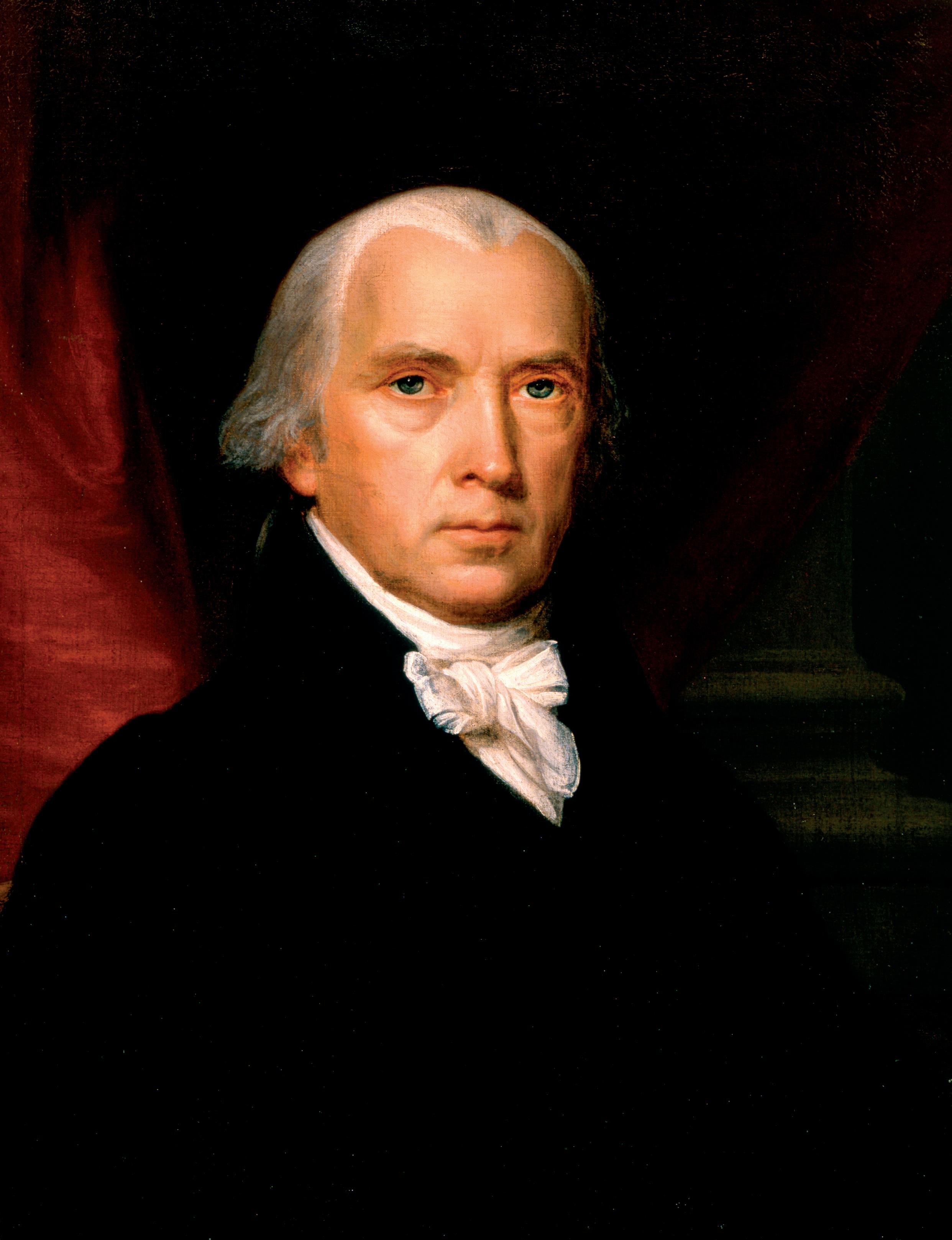
Architect of Religious Liberty
James Madison framed the foundation for the idea of the separation of church and state
WRITTEN BY Andrew Benson Brown
Among the constitutional amendments, the First is the most sacred. Its guarantees of the freedoms of religion, speech, press, assembly, and the right to petition have made American shores a beacon for the world. The quiet and bookish man who first proposed it spent many years reflecting on its related issues in solitude—an uncommon pastime for a politician. The First Amendment has become so fundamental to the way Americans think about themselves as social creatures that it is easy to forget the skepticism, and even outrage, that it caused in its day.
A Scholar Enters Politics
James Madison was a shrewd student of political history. Of his many thoughts on government, though, one concern was foremost. In “The Three Lives of James Madison: Genius, Partisan, President,” Noah Feldman observes: “The subject that most animated James Madison was the freedom of religion and the question of its official establishment.” He developed an academic interest in the topic at Princeton under the Rev. John Witherspoon, who filled him with ideas of religious liberty inspired by the Scottish Enlightenment.
After graduating, Madison witnessed the persecution of religious dissenters in his native Virginia, where the Anglican Church was the established religion. In a letter to a friend dated January 24, 1774, Madison
described traveling to a nearby county and encountering imprisoned Baptist ministers, “5 or 6 well-meaning men” who did nothing more than publish their orthodox views. That April, he wrote: “Religious bondage shackles and debilitates the mind and unfits it for every noble enterprise, every expanded prospect.”
Madison entered local politics and attended Virginia’s constitutional convention in 1776. There, George Mason submitted his draft for a Declaration of Rights, which included a clause stating that “all Men should enjoy the fullest Toleration in the Exercise of Religion, according to the Dictates of Conscience.” Madison was not satisfied. He understood that a majority, in granting a minority permission to practice religion, could take it away as well. Going beyond John Locke’s idea of toleration, Madison successfully proposed changing the wording to reflect the right of “free exercise of religion.”
This guarantee ended the Anglican Church’s spiritual monopoly in Virginia. Eight years later, though, Patrick Henry spearheaded legislation to levy religious taxes. Madison opposed Henry but knew he was too soft-spoken to match the eloquent orator. He responded by writing a petition, “Memorial and Remonstrance against Religious Assessments.” Religious belief, he argued, “must be left to the conviction and conscience of every man; and it is the right of every man to exercise it as these may dictate.” Belief could not be coerced and must exist in a separate sphere from civil government. Even a small tax could become oppressive.
Madison’s essay became foundational for
ISSUE 3 | MARCH 2023 23 | FEBRUARY 2023 47
Founding Fathers | History
LEFT “James Madison” by John Vanderlyn, 1816. Oil on canvas. The White House, Washington, D.C.
vvv

the idea of the separation of church and state. The petition garnered enough signatures to defeat the proposed bill, and in 1786 the Virginia Statute for Religious Freedom was passed.
The Bill of Rights
By 1789, Madison had designed the Constitution and convinced most of the states to ratify it by authoring 29 of the articles that comprised “The Federalist Papers.” But the groundbreaking document was not safe. North Carolina and Rhode Island still had not ratified it. Opponents who favored states’ rights over federal power wanted to hold a
second constitutional convention to undo the new government.
To prevent this, Madison drafted amendments that would address the Constitution’s flaws. He submitted his draft to Congress on June 8, proposing protections of individual liberties without changing the government’s structure. He sought to encapsulate, among these, his years of religious reflections. The clause of the proposed amendment—originally the fourth rather than the first—was more descriptive than its final version:
The civil rights of none shall be abridged on account of religious belief or worship, nor

24 AMERICAN ESSENCE 48
History | Founding Fathers
Madison defended his bill, arguing it would limit the tyranny of the majority and ‘establish the public opinion’ in favor of rights.
LEFT The Bill of Rights includes the first 10 amendments to the U.S. Constitution.
This page is not in the
preview.
not included preview.
shall any national religion be established, nor shall the full and equal rights of conscience be in any manner, or on any pretext infringed.
This proposal had three aspects: guaranteeing equal treatment of minority views, barring Congress from establishing a national church, and establishing conscience as a right free from coercion.
Madison struggled to get his amendments passed. Federalists ridiculed them as useless “milk and water.” Anti-Federalists unanimously opposed him. His old nemesis Patrick Henry called for a total revision of the Constitution, claiming a national bill of rights did not sufficiently guard them for individuals or states. An anonymous author, writing under the pen name “Pacificus,” asserted in a New York newspaper that Madison’s “paper declarations” were “trifling things and no real security to liberty.”
Madison defended his bill, arguing it would limit the tyranny of the majority and “establish the public opinion” in favor of rights. Federalist support began to trickle in. Madison wanted to fold the amendments into the Constitution itself, but he settled for appending them at the end. Representatives eliminated some of his proposals and altered others.
The final version of the First Amendment’s clause on religious liberty came to read: “Congress shall make no law respecting an establishment of religion, or prohibiting the free exercise thereof.” This slightly more restrictive version omitted Madison’s phrasing on the “rights of conscience,” but it is otherwise consistent with his intentions. Madison’s achievement made him the world’s foremost champion of religious liberty. His recognition of free exercise, rather than mere toleration, has been a model for other governments around the globe. •

ISSUE 3 | MARCH 2023 25 | FEBRUARY 2023 49
ABOVE The first federal Congress of 1789, where the first 10 amendments to the Constitution were passed, becoming known as the Bill of Rights. Shown in the central mural (L to R): James Madison (standing), speaker Frederick Muhlenberg (seated), Elbridge Gerry (standing, foreground), and Fisher Ames (standing, rear). “The First Federal Congress, 1789” by Allyn Cox, 1973–1974. Oil on canvas. Great Experiment Hall at the United States Capitol, Washington, D.C.
From Hawaii, With Chocolate
In the only state in America where cacao is commercially produced, small farmers and makers transform island-grown beans into world-class bars
 WRITTEN BY Eric Lucas
WRITTEN BY Eric Lucas
“Now, don’t just gobble it down all at once.”
When Will Lydgate is introducing people to his Kauai chocolate, he suggests they melt it in their mouths first, to allow the flavor of the estate-grown cacao to reach full impact on their palates.
Invariably, Lydgate Farms visitors exclaim over the light, mellow taste and the lack of bitterness and astringency that often puts Americans off dark chocolate. “Never knew it could taste as good as this,” they report.
“There’s nothing intrinsically bitter about dark chocolate,” Lydgate tells them. “You’ve
26 AMERICAN ESSENCE 64
Volunteers process hand-harvested cacao pods at Lydgate Farms in Kapaa, on the island of Kauai, Hawaii.
just had bad dark chocolate.”
An outspoken advocate for the nascent Hawaiian Islands chocolate industry, and the fifth generation of a Kauai farming family, Lydgate’s enthusiasm for his business is as deep and potent as his chocolate. Lydgate Farms’s 46-acre location on Kauai’s east shore, nestled in the foothills of Mount Waialeale, has 3,000 cacao trees, some as old as 20 years—making it one of the larger and older cacao orchards in the islands.
Still a modest niche in Hawaii’s agricultural industry—which is currently dominated by macadamias and coffee, each worth about $62 million a year—estate-grown cacao and its specialty outcome, bean-to-bar chocolate, have gained enough visibility since their mid’90s beginnings that they could earn a precious modern designation. It’s a trend.


Small-Farm, Small-Batch
The state’s largest cacao orchard is Oahu’s Waialua Estate, which also helped inaugurate the industry in 1996 when its orchard was planted on a former sugar-cane plantation, largely as an experiment. Although cacao was first brought to the islands in the mid-19th century, the dominance of sugar, pineapples, macadamias, and then coffee focused interest on other crops until quite recently. Waialua Estate is about 80 acres—larger than Lydgate’s, but still tiny by global standards.
The Hawaiian cacao industry’s small-farm, artisan nature lends itself to producing a distinctive product. At Lydgate Farms, small-lot “box” fermentation of the farm’s 3 metric tons of cacao beans means that, after the first 48 hours, each batch is turned every 24 hours to promote aeration and boost the yeasts that sweeten and mellow the beans.
Today, there are cacao orchards on five islands and chocolate makers on the four main ones: Kauai, Oahu, Maui, and the Big Island. Several farms, including Lydgate Farms, have been recognized in the Parisbased Cocoa of Excellence Awards. Hawaiigrown chocolate populates gift and food stores, is widely available online, draws ever more visitors to farm tours such as those at

ISSUE 3 | MARCH 2023 27 | FEBRUARY 2023 65 Made in America | Lifestyle
LEFT Blossoms on one of Lydgate Farms’s cacao trees.
LEFT Cacao seeds, encased in white, slippery, sweet-tangy pulp, are extracted from a cacao pod.
LEFT The wet seeds are loaded into untreated maple plywood boxes and covered with banana leaves to ferment for five to seven days.
Island Terroir
Like all trends, myths and misinformation go along for the ride. No, Hawaii is not the northernmost place cacao is grown—orchards in Asia hold that distinction, Lydgate said. “I’d like to stamp out the ‘North Pole of Chocolate’ nonsense,” he said, referring to an urban-myth moniker for Hawaiian cacao that appeared a decade or so ago. “Let’s just win people over to Hawaiian chocolate on the basis of how good it is.”
Hawaiian cacao has a distinctively wonderful flavor, even among the dozens

of very fine chocolates from around the globe. Comparisons seem obvious to the Islands’ famous coffee, which has enjoyed a renaissance with the specialty coffee boom of the past 30 years. Hawaiian coffee has a distinctive taste and cachet derived from what ag producers call “terroir,” in this case citing the Islands’ lava landscape, trade winds-borne rainfall, and reliable afternoon cloud cover’s role in producing the coffee’s characteristic flavor. As explained by Robert Dye, whose Waimea Chocolate Company is on Maui, “The same unique growing conditions—the lava landscape, the climate, the salt air—that work so well for coffee in the Islands are equally beneficial for cacao.”

28 AMERICAN ESSENCE 66
ABOVE Will Lydgate, owner of Lydgate Farms and the fifth generation of a Kauai farming family, cuts open a cacao pod.
Lifestyle | Made in America
RIGHT Cacao pods are hand-harvested from 3,000 cacao trees on Lydgate’s 46-acre farm.
Lydgate, and now has its own festival, the Kauai Chocolate and Coffee Festival.
This page is not in the preview.
LEFT The fermentation process, which is carefully monitored and includes knowing when to turn the boxes to mix the seeds and add oxygen, transforms the cacao’s simple, bitter flavors into something complex, sweet, and refined.


Lydgate, who transforms all of his beans into estate-branded chocolate, says Hawaiian cacao has a brighter, lighter, and fruitier character compared to that from other origins. Taste elements include plum, pie cherry, blackberry, and pear; fragrances range from petunia to strawberry. Some connoisseurs attribute this to the fact that, northernmost or not, Hawaiian cacao is grown at a latitude farther (19 degrees) from the equator than most African and South American growers inhabit. Thus, like champagne grapes, cooler night-time temperatures—sometimes in the 60s—boost the character.
not included preview.
“Our northern latitude can be an advantage—both agronomically and in a marketing sense,” said Skip Bittenbender, former agronomist and cacao advocate at the University of Hawaii’s College of Tropical Agriculture and Human Resources.
For connoisseurs who may unaccountably grow bored with plain dark Hawaiian chocolate, its brighter flavor makes it perfect for amendment with passion fruit, coffee, and other iconic island foodstuffs. Island chocolatiers may add estate-grown vanilla, local honey, lavender, coconut, macadamia, sea salt, and more. Any such flavoring simply magnifies the splendor of the base chocolate.
“We’ll just work at opening eyes one tastetest at a time,” vowed Lydgate. •
LEFT The fermented seeds are then sun-dried (pictured here), roasted, and winnowed, a process that removes the husks and crushes the beans into nibs.
LEFT The cacao nibs are ground into a thick, liquid paste called cocoa mass or cocoa liquor— what is then made into the chocolate we know and love.

ISSUE 3 | MARCH 2023 29 | FEBRUARY 2023 Made in America | Lifestyle
vvv
The Hawaiian cacao industry’s small-farm, artisan nature lends itself to producing a distinctive product.
Love at First Bite
MEET THE CHEFS: ANGIE RITO AND SCOTT

TACINELLI
Chef-owners of Don Angie, New York Together for 14 years
An Instant Connection:
When Tacinelli first met Rito in 2008, when she began working as a server at the New York restaurant where he worked as a line cook, “I thought she was so cute, I couldn’t take it,” he writes in their cookbook, “Italian American.”
They Hit It Off:
“We both came from Italian American families, and she loved food as much as me”—and at Ohio-transplant Rito’s request, they ate around the city on their days off so she could learn about the local restaurant scene.
A Whirlwind Tour:
Not long after their first official date, they took a three-week trip to Spain with an “all-food itinerary,” Rito writes. “I realized I was in love with Scott on that trip.”
Better Together:
With Tacinelli’s encouragement, Rito, who grew up in her family’s deli and bakery with a dream of owning a restaurant one day, turned from serving to cooking in the kitchen. They worked at separate restaurants for several years, which meant long, grueling work days apart; one year, they had only two days off together.
Eventually, they realized “the only way for us to be in a relationship while also doing the work we’re passionate about was to do it together,” they write.
Italy Meets World:
Early in their relationship, they began a tradition of annual pilgrimages to Italy, exploring new regions and their unique cuisines each time. (In 2015, they were married in Florence.)
Back in multicultural New York, they combined their culinary heritage with new flavors and techniques they fell in love with from different cuisines around the world, to develop their own, now much-acclaimed version of modern Italian American cooking.
All in the Family:
For both chefs, what they do comes down to “cooking with heart,” they write. “Every move we make as professional chefs is done with the same spirit of generosity we grew up with. For us, it’s solely about taking care of people, the way our families always have.”
30 AMERICAN ESSENCE 74
This Valentine’s Day, say it with homemade sweets: specifically, these chef-approved recipes from two of the country’s top culinary power couples
MEET THE CHEFS: GENEVIEVE GERGIS AND ORI MENASHE

A Sour Start:
“We met at a restaurant called La Terza. I worked the salad station, she was the host. I had a crush on her from day one. But she wasn’t into me.” —Ori
Menashe
Turning Point:
“It was the day before New Year’s and the chef asked me if I could stay overnight to prep all the food. I asked if I could invite someone to the restaurant after. She came at around 1 o’clock in the morning and I cooked her a meal—a beet salad.” —Menashe
“I know it doesn’t sound romantic, but he knew that I liked the beet salad at the restaurant. He was going to make a steak, too—but we never got to, we were talking too much.” —Genevieve
Gergis
Memorable Bites:
“Because I worked so late, the only way for us to hang out was late at night. She would make me this awesome sandwich.” —Menashe
“It’s a breakfast-y sandwich, but at night. I did a soft-scrambled egg scrambled with a little bit of creme fraiche. Then I would take a toasted baguette with salami, a bit of mustard and mayonnaise or aioli, and cheese, either provolone or havarti, and I would put the egg over it.” —Gergis
Romantic Rituals:
“He makes me tea every morning. My favorite is Native Cultivar Reserve from Red Blossom Tea Company—it’s very honey-ish, nectar-ish. He knows how to make it perfectly—the exact steep time, temperature, and amount. I'm a very picky tea drinker.” —Gergis
“I’ve been a tea drinker since meeting Genevieve. I used to be an alcohol drinker.” —Menashe
Most Admirable Traits:
“She doesn’t cease to amaze me. She is able to handle so much, and she does it so well. I look up to her. She’s a very highly intelligent human being— who’s beautiful as well.” —Menashe
“I’ve never in my life seen anyone who has his perseverance for doing things the right way, and his drive to work really hard every day to get something exactly the way he envisioned it. But he also doesn’t let his drive get in the way of his compassion. He brings everyone into the fold with him, to have that drive along with him.” —Gergis
ISSUE 3 | MARCH 2023 31 | FEBRUARY 2023 Recipes | Lifestyle
Chef-owners of Bestia, Bavel, and Saffy’s, Los Angeles Together for 17 years
Hazelnut Torta Caprese With Sweetened Crème Fraîche
FOR THE CHOCOHOLICS, Angie Rito and Scott Tacinelli offer their take on torta caprese, a coastal Italian dessert typically made with almonds. They swap in hazelnuts and toasted brown butter, for a cake that’s ‘‘rich, dense, and almost fudge-like in texture, with a Nutella-esque flavor profile, but all grown up,’’ they write in their cookbook, ‘‘Italian American.’’
Serves 8 to 10
For the Cake
• 3/4 cup (1 1/2 sticks) plus 1 tablespoon unsalted butter
• 1 1/2 cups (10 ounces) dark chocolate discs (as close to 70 percent cacao content as possible)
• 2 1/2 cups (12 ounces) blanched roasted unsalted hazelnuts
• 5 large eggs
• 1 teaspoon vanilla bean paste

• 1 cup granulated sugar
• 1 tablespoon kosher salt
• 1 tablespoon cornstarch
• 1 tablespoon plus 2 teaspoons buttermilk
• Flaky sea salt, such as Maldon, for finishing (optional)
For the Topping
• 1/2 cup heavy cream
• 3/4 cup crème fraîche
• 1/4 teaspoon vanilla bean paste
• 1/4 cup powdered sugar
• 1/4 teaspoon kosher salt
Preheat the oven to 350°F. Lightly grease a 10-inch wide, 2-inch deep cake pan with nonstick cooking spray.
Make the cake:
In a large sauté pan, heat the butter over medium-high heat until melted and large, foamy bubbles start to appear, 2 to 3 minutes. Swirl the pan to ensure even cooking. The butter will make loud sputtering noises, then the bubbles will dissipate and the noise will subside—this is when you should notice the white milk solids in the butter turning deep golden brown in color.
Remove from the heat, add the chocolate, and stir well until melted. Set aside to cool.
In a food processor, pulse the hazelnuts until they’re ground as finely as possible, with the texture of wet sand, stopping to scrape down the sides of the bowl as needed. Set aside.
32
RECIPE BY Angie Rito & Scott Tacinelli
Lifestyle | Recipes
This page is not in the preview.
not included preview.
In a large bowl, whisk the eggs, vanilla paste, granulated sugar, kosher salt, cornstarch, and buttermilk until well combined.
When the chocolate mixture has cooled to room temperature, add the ground hazelnuts and stir well to combine. Pour the chocolate-hazelnut mix into the bowl with the egg mixture and stir well to combine and create a smooth batter. Pour the batter into the cake pan.
Bake until set in the middle and a cake tester comes out clean, 25 to 30 minutes. Remove the cake from the oven and let it cool in the pan. It may deflate slightly as it cools.
Once cool, carefully remove the cake from the pan by placing an inverted plate on top and flipping it over. Place your desired serving plate on top of the now upsidedown cake and flip it once more, so that it’s facing right-side up.
Make the topping:
In a stand mixer with the whisk, whip the heavy cream on medium-high speed until stiff peaks form, 4 to 5 minutes. In a medium bowl, mix the crème fraîche, vanilla paste, powdered sugar, and salt with a rubber spatula until combined. Fold the whipped cream into the crème fraîche mixture with the spatula.
To serve, slice the cake into wedges and top with flaky sea salt, if using, and a dollop of whipped crème fraîche. For a more delicate texture, serve at room temperature. For a more dense, fudgy texture, serve chilled. Leftover cake keeps, tightly covered in the refrigerator, for up to 4 days.
Reprinted with permission from “Italian American: Red Sauce Classics and New Essentials: A Cookbook” by Angie Rito and Scott Tacinelli (Clarkson Potter, 2021).

33 77 Recipes | Lifestyle
Mexican Wedding Cookies
RECIPE BY Genevieve Gergis
GENEVIEVE GERGIS has made these cookies, her husband Ori Menashe's favorite, every holiday for as long as she can remember. Her version of the classic employs rye flour, pecans, and a generous dose of salt for extra nutty, buttery, not-too-sweet results. For denser cookies (like Menashe likes), cream the butter for a minute. For a lighter, airier version (like Gergis prefers), cream the butter for 4 to 5 minutes.
Makes about 40 cookies
• 1 cup unsalted butter, at room temperature
• 1/2 cup powdered sugar, plus more for dusting
• 2 teaspoons vanilla extract
• 1 3/4 cups pecan halves, very finely chopped
• 1 1/3 cups all-purpose flour
• 6 tablespoons rye flour
• 1 teaspoon kosher salt
In a bowl of a standing mixer fitted with a paddle attachment, beat the butter on medium speed until pale and glossy, about 5 minutes. Add powdered sugar and beat on low
speed to high until very light and fluffy, about 5 minutes, scraping down the sides of the bowl about halfway through. Add the vanilla and beat for 1 minute, then add the nuts and beat briefly on low speed just until incorporated.
In a small bowl, whisk together flours and salt. Add to the batter and mix on very low speed until just incorporated and the mixture forms a loose, shaggy dough. Do not overmix. Wrap in plastic wrap and refrigerate for 2 hours.
Preheat oven to 325°F. Line a baking sheet with parchment paper.
Shape the dough into ping-pong-sized balls and place them about 2 inches apart on the prepared baking sheet. Transfer the whole sheet to the refrigerator for 5 minutes to rechill briefly, then bake until just barely golden on top, 20 to 25 minutes.
Once cookies are cooled, dust with powdered sugar and enjoy.
Reprinted with permission from “Bestia: Italian Recipes Created in the Heart of L.A.” by Ori Menashe, Genevieve Gergis, and Lesley Suter (Ten Speed Press, an imprint of Penguin Random House, 2018).
34 AMERICAN ESSENCE
Lifestyle | Recipes
This page is not in the preview.
not included preview.

The Great American West
Distinguished as the greatest Western landscape painter, Albert Bierstadt was famous for capturing the majestic beauty of the Rocky Mountains

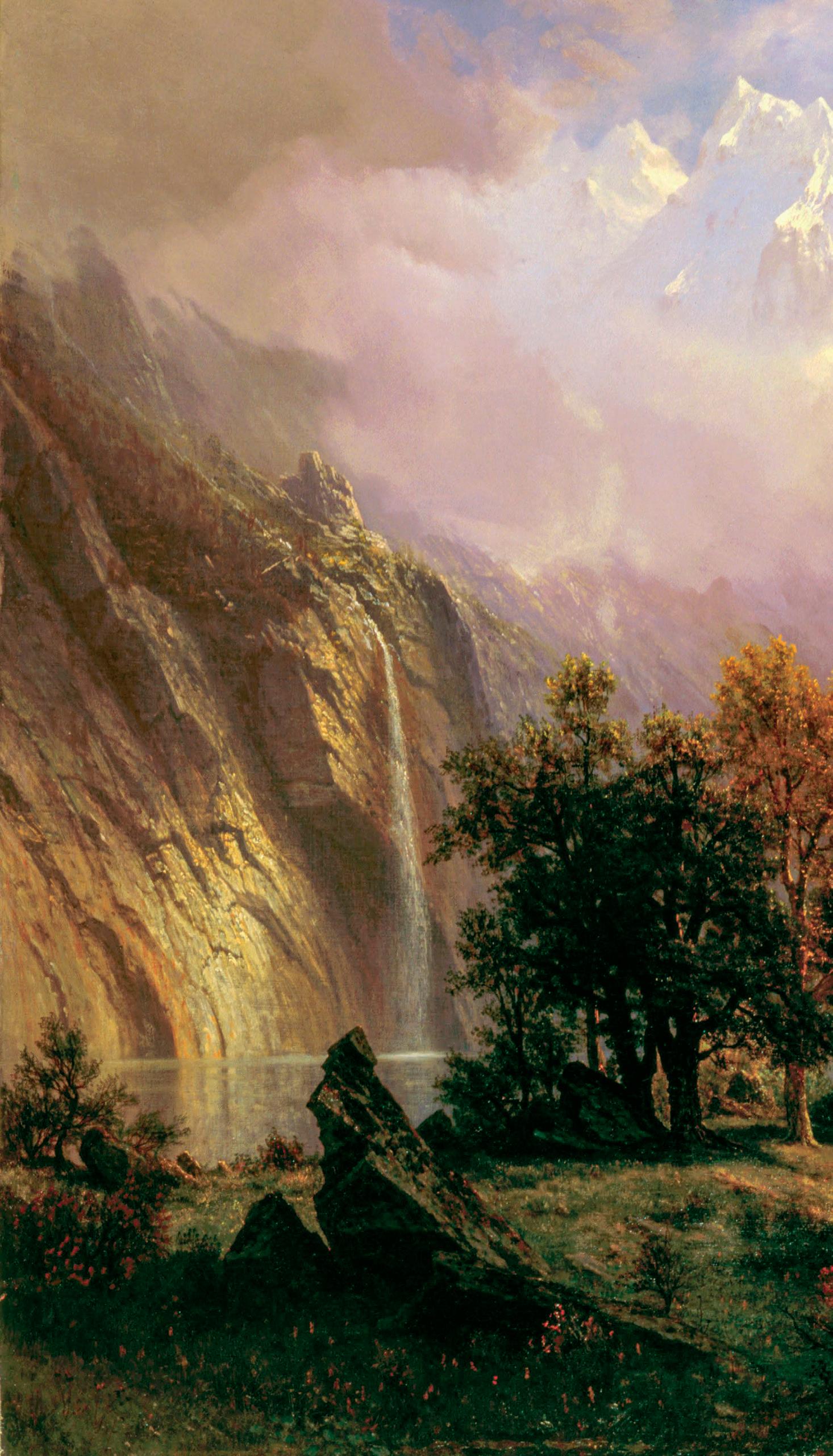 WRITTEN BY Bob Kirchman
WRITTEN BY Bob Kirchman
earned
wilderness
atmospheric
his reputation
36 AMERICAN ESSENCE 80
ABOVE Inspired by the unspoiled
in the West, Albert Bierstadt’s luminous and
landscapes
him
as one of America’s most distinguished artists in the mid-19th century. “Albert Bierstadt” by Napoleon Sarony, circa 1870. Albumen print. National Gallery of Art Library, Washington, D.C.
RIGHT “Rocky Mountain Landscape” by Albert Bierstadt, 1870. Oil on canvas. White House, Washington, D.C.
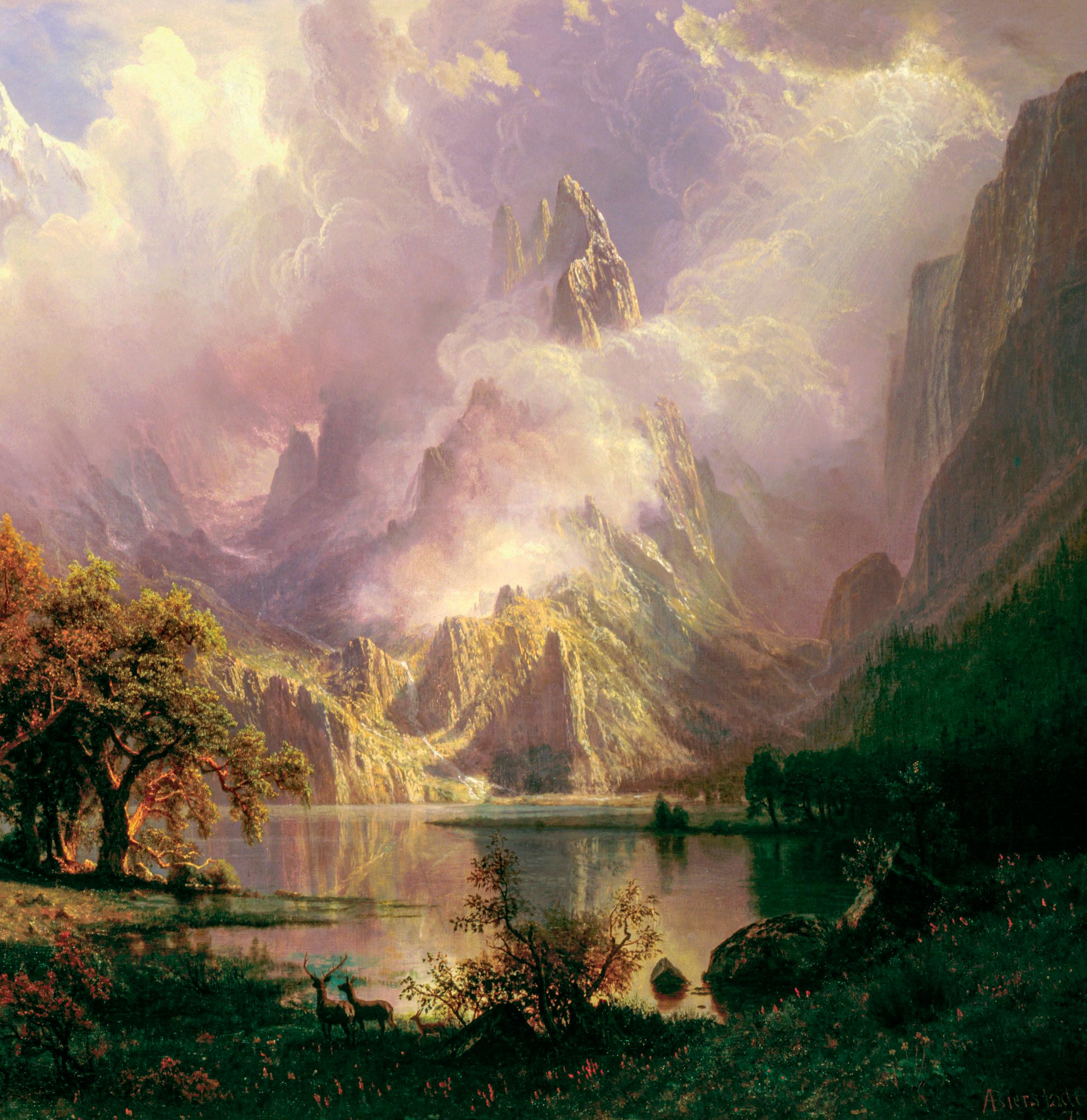
ISSUE 3 | MARCH 2023 37 | FEBRUARY 2023 81 Landscapes | Lifestyle
Bring me men to match my mountains, Bring me men to match my plains, Men with empires in their purpose, And new eras in their brains,” penned the American poet Sam Walter Foss in his poem, “The Coming American.”
Relatively unchartered by man in the mid
1800’s, were the great western mountains of America. Far from the cities that paved over the natural world, the virgin landscapes— wild and pure—attracted the American Romanticists and Transcendentalists. Before the transcontinental railroad was completed in 1869, one would have to traverse the unforgiving landscapes and swim horseback through
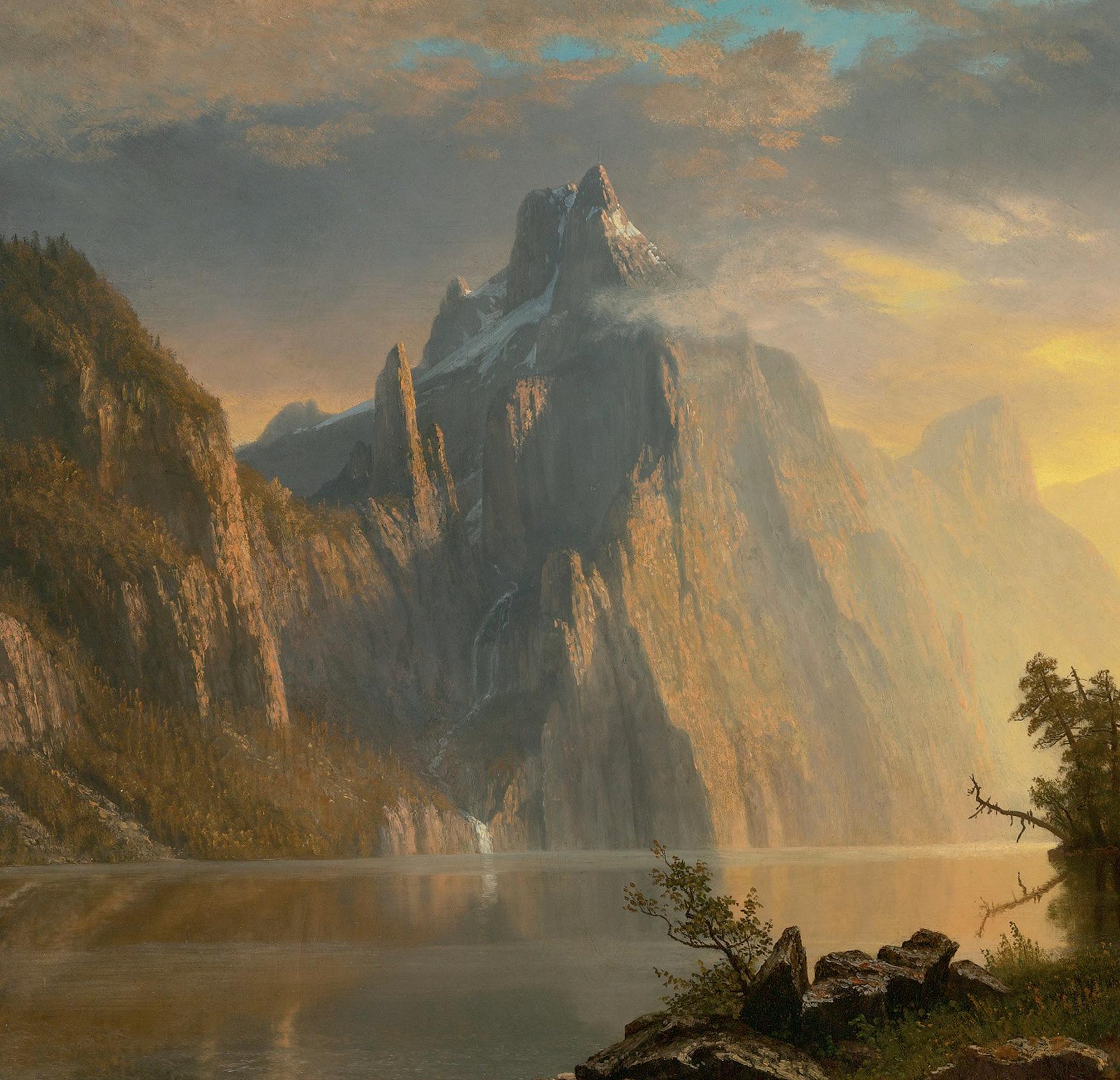
38 AMERICAN ESSENCE
This page is not in the preview.
not included preview.
rivers: The journey being the necessary and sometimes miserable path between the two.
American landscape painter, Albert Bierstadt, bridged the gap between east to west. With a sense of the land’s raw beauty, promise, and power, he captured the spirit of the American west and offered viewers, who would never peril the westward journey, a window into the majesty of the Rocky Mountains.
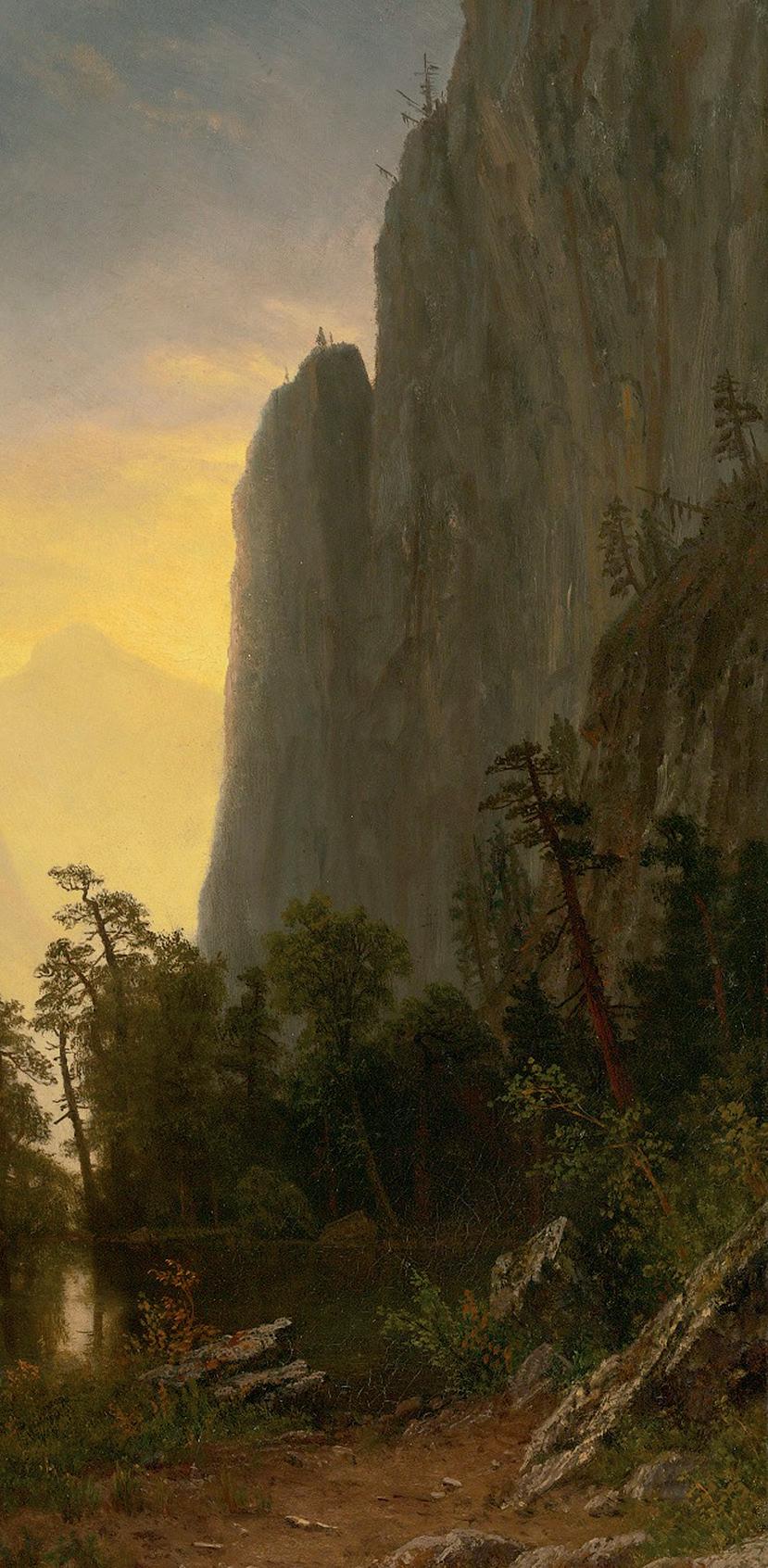
Sculpting an Artist
Albert Bierstadt was born on January 7, 1830, in the Westphalia town of Solingen (now a part of Germany). His parents immigrated to New Bedford, Massachusetts, when he was 1 year old. As a young boy, he was known for his fine drawing skills. In 1851, Bierstadt took up painting in oils, and just two years later he returned to Europe, hoping to study at the Dusseldorf Academy.
Bierstadt applied to the school, but he didn’t get in. Undaunted, he became an apprentice of his friend Worthington Whittredge. Bierstadt studied informally with the Dusseldorf painters and honed his skills painting Alpine landscapes. Growing out of the German Romantic Movement, the school greatly influenced the painters of the Hudson River School. The school emphasized highly detailed landscapes, and many of the members were strong advocates of plein air painting—working outside in the natural environment.
ABOVE
Returning to New Bedford in 1857, Bierstadt become a teacher of drawing and painting. That year, the Boston Athenaeum bought one of his paintings, “The Portico of Octavia, Rome” (1855), giving him funds to begin painting full-time.
ISSUE 3 | MARCH 2023 39 | FEBRUARY 2023 Landscapes | Lifestyle
After seeing Lake Tahoe during an 1863 expedition through California, Fitz Ludlow wrote, “Just across the boundary, we sat down on the brink of glorious Lake Tahoe … [with its] crystal sheet of water freshdistilled from the snow-peaks, its granite bottom visible at the depth of a hundred feet.” “Lake in the Sierra Nevada” by Albert Bierstadt, 1867. Oil on canvas.
vvv
Bierstadt studied informally with the Dusseldorf painters and honed his skills painting Alpine landscapes.
In 1858, he displayed an immense painting of a scene in Switzerland at the National Academy of Design (honorary association of American artists). This painting earned him some acclaim as well as recognition by the National Academy. Bierstadt began his career as an American painter rendering scenes in New England and upstate New York, many in the Hudson River valley, firmly establishing himself as a painter of the Hudson River School.
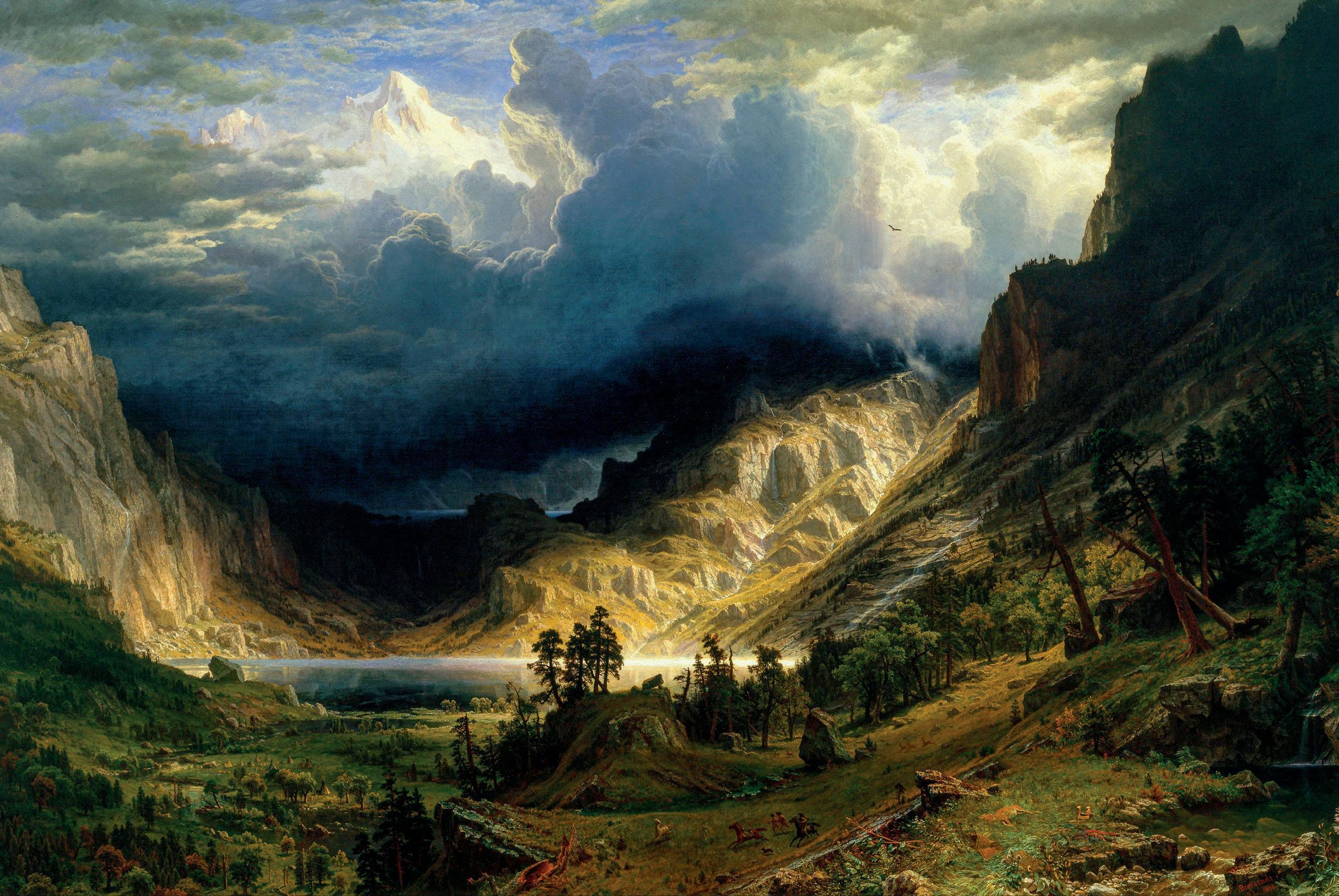
Westward Expeditions
In 1859, drawn by the Alpine scenery of the American West, Bierstadt joined the survey party of Frederick W. Lander, who was working for the United States government. He made extensive studies on the trip, which would become source material for his grand paintings, executed in his studio at the 10th Street Studio Building in New York.
In 1860, he was formally elected a member
of the National Academy. His skills, honed in the mountains of Europe, would serve him well as he became the man many would consider “the preeminent painter of the western American landscape.”
In 1863, he headed west again. This time, he traveled with Fitz Hugh Ludlow, a colorful American author, journalist, and explorer. Ludlow was a man who lived large and died young (at age 34). It was Ludlow, acting in his capacity as art critic for the New York Evening Post, who had established Bierstadt’s reputation as an American landscape artist.
Bierstadt was 33 when he set out with Ludlow and two other men on their journey. Ludlow wanted to document the journey. Bierstadt wanted to do studies for further paintings, and the others—two gentlemen named Hall and Durfee—just came along for the adventure. They arrived in Denver, Colorado, on June 8, 1863, and visited Pike’s Peak and the Garden of the Gods before setting
40 AMERICAN ESSENCE 84
This page is not in the preview.
out for Salt Lake City, Utah.
They traveled to California, Oregon, Washington, and British Columbia. But it was in Colorado that Albert Bierstadt climbed a mountain that would later bear his name. Today, the 14,065-foot Mount Bierstadt is a popular destination for hikers. Bierstadt made the first documented ascent to the summit on that trip.
He also went to the summit of Mount Evans, then unnamed, which he suggested be named Mount Rosalie after his future wife. His painting “A Storm in the Rocky Mountains, Mount Rosalie,” completed in 1866, hangs at a staggering size of near 7 feet by 12 feet and features an intense mass of clouds over the exaggerated peak. The mountain itself would be officially named Mount Evans, in honor of a Colorado governor.
A Luminous Painter
not included preview.
The grand landscapes Bierstadt depicted were vast on a scale that needed large canvases: Her plains, waterways, and mountains in the west required nothing less.
As a luminist painter, Bierstadt used dramatic lighting in his compositions to accentuate the energy of the soaring landscapes. The exquisite use of light, the attention to detail, and the aerial perspective all work to convey a true sense of the wonder that is western America.
His 1867 painting “Emigrants Crossing the Plains” captures well the spirit of that new land. In the painting, a group of settlers are moving toward a blazing evening sky. In the distance are towering cliffs bathed in evening light, and the land that lies before them is vast and flat. Trees frame the setting sun and delineate a water course where the settlers’ livestock may drink.

In his life, Bierstadt achieved great success and recognition. Napoleon III of France even awarded him the Legion of Honor, which is the highest French order of merit. Although the artwork of American landscape painters fell out of favor during the rise of impressionism in the 20th century, Bierstadt’s paintings were preserved in museums and private collections following his death on February 18, 1902. •

ISSUE 3 | MARCH 2023 41 | FEBRUARY 2023 85
ABOVE “A Storm in the Rocky Mountains, Mt. Rosalie” by Albert Bierstadt, 1866. Oil on canvas. Brooklyn Museum, New York.
RIGHT “Emigrants Crossing the Plains” by Albert Bierstadt, 1869. Oil on canvas. Butler Institute of American Art, Youngstown, Ohio.
Landscapes | Lifestyle
Block Party: Anatomy of a Self-Reliant Community

No man is an island—no matter what kind of community you live in. Peter, a technology consultant who lives with his wife and children in a Texas suburb, walked us through how he’s rallied his block together into a close-knit, mutually supportive, prepared-for-anything team.
WRITTEN BY Crystal Shi
Each household keeps at least a 3-month supply. (On top of his family’s core food supply, Peter keeps an extra 5 percent to give away to someone in need.) Several grow or raise some of their own, to supplement their storage and trade with others, using methods such as:
1. Raised-bed gardening, using companion planting to maximize space (e.g., potatoes and cucumbers can be grown very densely and prolifically; marigolds help repel insects).
2. Aquaponics, a closed-loop system that combines aquaculture (fish farming) and hydroponics, using the fish waste to fertilize the plants, which in turn filter the water for the fish.
3. Edible landscaping, replacing decorative shrubs with plants both ornamental and edible, such as rosemary bushes and ornamental cabbages.
4. Keeping chickens or rabbits, to supply eggs and meat for protein.
5. Knowledge of edible local plants, to safely forage.
Power Life-Saving Supplies
Power is a key consideration. Each household has a backup source, such as solar panels or a generator, or at the very least flashlights, headlamps, and extra batteries. Candles are an emergency lighting source, not a first choice.
Essential tools include: a first-aid kit and medication, including antibiotics and pain meds; fire extinguishers; radios; a wellmaintained vehicle that can pull or haul; and tools that can sever or free things, such as a pry bar to open a jammed door and a chainsaw to cut through a fallen tree.
Food
How to Get Started
Say Hello: Get to know your neighbors—you might host a block party or simply start saying hi on the streets—to find like-minded people, build trust, and make a plan

Plan a Productive Party: Throwing a canning party or taking a ham radio class together can both strengthen bonds and build knowledge.
Get Involved in a CERT: FEMA’s Community Emergency Response Team program offers free training materials and will connect you to a larger community. Take its online courses or search for a local CERT at Community.fema.gov.
Designated Roles
Each house is equipped with security cameras, well-tested locks (Peter recommends trying to break into your own house to identify weak spots), and armaments and the skills to use them. Dogs, naturally pack-minded, are also great protection—you’ll never sneak up on them.
Identifies needs and checks that each household’s are taken care of; formulates disaster plans and leads neighborhood drills; assigns roles; encourages learning and improving skills
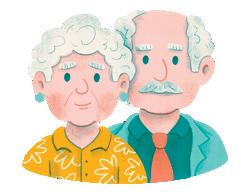


Coordinates with block captain to plan, organize, and check on neighbors.
The Engineer

Troubleshoots and repairs electronics and machinery (radios, generators, air conditioners, etc.), and handles welding and any other machine work.
Applies nursing background to provide medical care, and teaches others basic skills such as how to make a tourniquet and clear an airway.

The Medic Covers personal prep, while the rest of the block focuses on protecting them.
The whole neighborhood has practiced identifying and following escape routes in case of an emergency evacuation, taking into consideration areas that may be blocked by fallen trees or other obstacles, and the possibility of having to navigate in the dark.
The Block Captain
The Block Lieutenant
The Elderly Couple
A Practiced Plan
Security
We hope you enjoyed the first few pages of American Essence.
To read the complete publication, subscribe today at americanessence.net

 The tumultous waters of Lake Michigan during the winter.
—THEODORE ROOSEVELT
The tumultous waters of Lake Michigan during the winter.
—THEODORE ROOSEVELT























 A rendering of the planned building for the Flight Test Museum outside the gates of Edwards Air Force Base in California’s Antelope Valley. Designed by architecture firm Gensler, it resembles the shape of the Nighthawk, a stealth plane built in the 1980s. The museum will hold more than 80 historic aircraft; completion is due in 2024.
A rendering of the planned building for the Flight Test Museum outside the gates of Edwards Air Force Base in California’s Antelope Valley. Designed by architecture firm Gensler, it resembles the shape of the Nighthawk, a stealth plane built in the 1980s. The museum will hold more than 80 historic aircraft; completion is due in 2024.





 WRITTEN BY Eric Lucas
WRITTEN BY Eric Lucas














 WRITTEN BY Bob Kirchman
WRITTEN BY Bob Kirchman

































